I was lucky enough to recently take the safari adventure of a lifetime, at the incredible Ol Pejeta Conservancy in Kenya. I really don’t know where to even start. This trip was everything I had ever imagined an African wildlife safari to be… AND so much more!
In this blog post, I will be going into detail about my visit to Ol Pejeta, including the activities I got up to, where I stayed, and the amazing animals I encountered. If you haven’t already been following along on my Instagram, you might not know that you can win this very same trip! Donate as little as $10 to support Ol Pejeta’s conservation efforts and you could win the chance to jet off to Kenya with a friend for the same incredible safari experience! Click here to find out more or see further details at the end of this blog post.
Disclaimer: This article is in collaboration with Ol Pejeta, Asilia Africa, and Omaze. There may be affiliate links used throughout the post, which means I get a small commission if you make a purchase (at no extra cost to you). Learn more about my affiliate policy here. Thank you for the support!
Ultimate Safari Adventure at Ol Pejeta Conservancy, Kenya
Trip dates: July 27 – August 1, 2019
Location: Ol Pejeta Conservancy, Kenya
When to go: year round, though June – October is considered peak season
Getting there: drive from Nairobi (3-4 hours) or fly into Nanyuki airstrip
Weather: average of 24°C/75°F during the day and 10°C/50°F at nighttime
Currency: Kenyan Shilling (KSH), with some places accepting USD.
Language: Swahili and English
Accommodation: Asilia Africa Ol Pejeta Bush Camp
Conservation fees: varies, check daily rates here
Who are Ol Pejeta?
Ol Pejeta Conservancy is a 90,000-acre private wildlife conservancy situated on the equator in Kenya’s Laikipia District. The conservancy sits between the foothills of the Aberdares and the magnificent snow-capped Mount Kenya… making for some pretty incredible views!
People come from all over the world to see Ol Pejeta’s astounding variety of animals, including the Big Five (the endangered black and white rhino, leopard, elephant, buffalo and lion), Grevy’s zebra, Jackson’s hartebeest, cheetah, chimpanzee, and more!
Ol Pejeta Conservancy’s mission is to conserve wildlife, provide a sanctuary for great apes, and generate income through wildlife tourism and complementary enterprise for reinvestment in conservation and communities. Ol Pejeta is the largest black rhino sanctuary in East Africa. And home to the last two northern white rhino on the planet. Any visit to the Conservancy or donation to this giveaway will go toward the protection of the rhino population on Ol Pejeta.
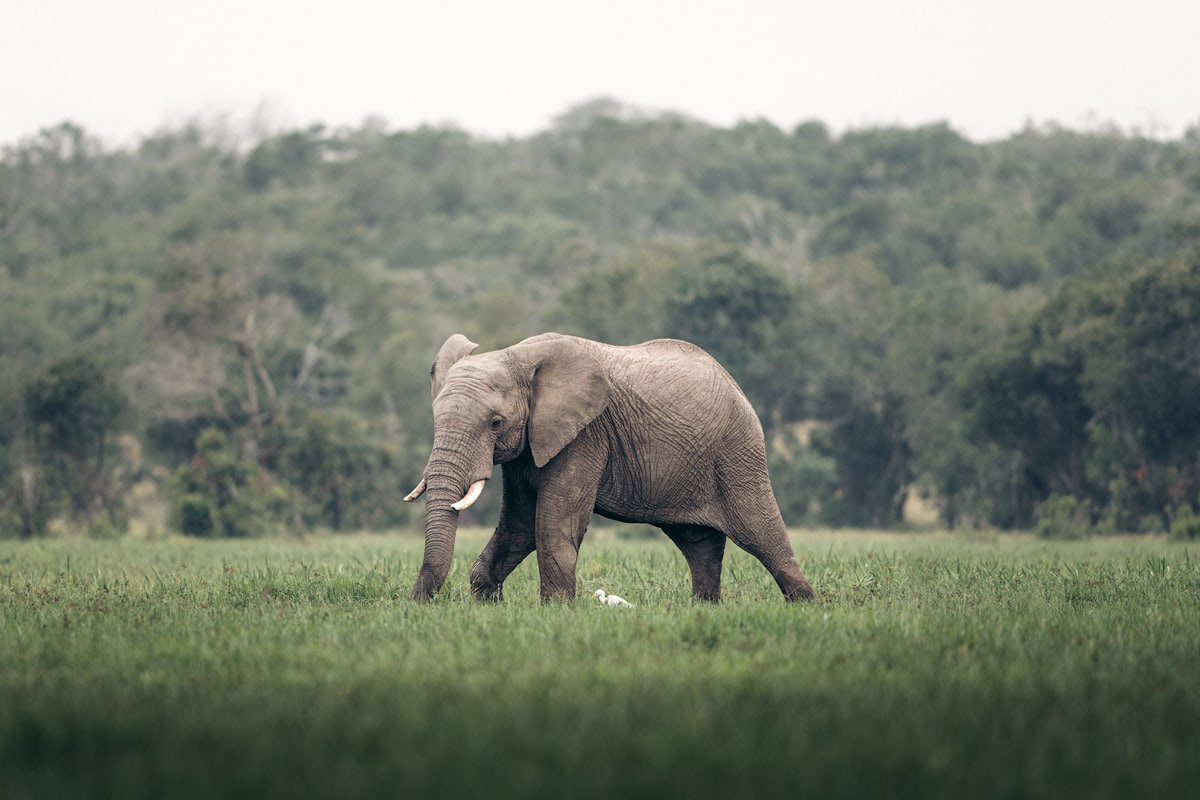
Daily Game Drives
Experiencing unique wildlife us undoubtedly a huge push for people to visit Kenya. We were treated to the most epic game drives by Asilia Ol Pejeta Bush Camp during our 5 night stay at Ol Pejeta Conservancy. We had a private driver and spotter. As well as our own safari vehicle for the duration of our stay. Because of this, we were able to decide what time we wanted to go out on game drives. And overall, we had a lot of flexibility in what we got up to.
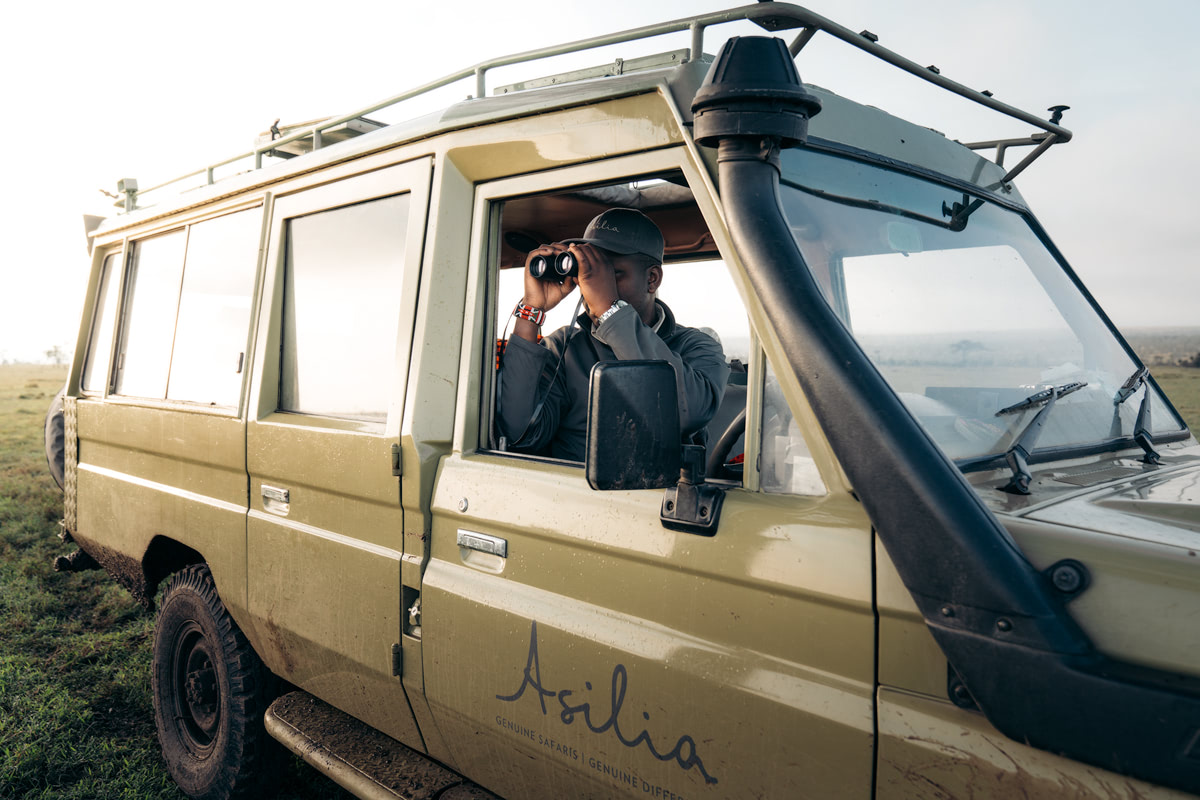
We knew early and late in the day were the best times to spot wildlife (as many animals typically sleep during the day)… and coincidentally these times are great for beautiful golden light and photography. With that in mind, we met our driver just before sunrise every morning. And he had the car running with hot water bottles and ponchos on the seats when we arrived. Turns out it gets quite cool in winter at Ol Pejeta due its elevation at around 5500 feet and its proximity to Mount Kenya (over 17,000 feet), which we weren’t entirely prepared for! Tip: make sure to pack a warm jacket and shoes if you are there during the winter months.
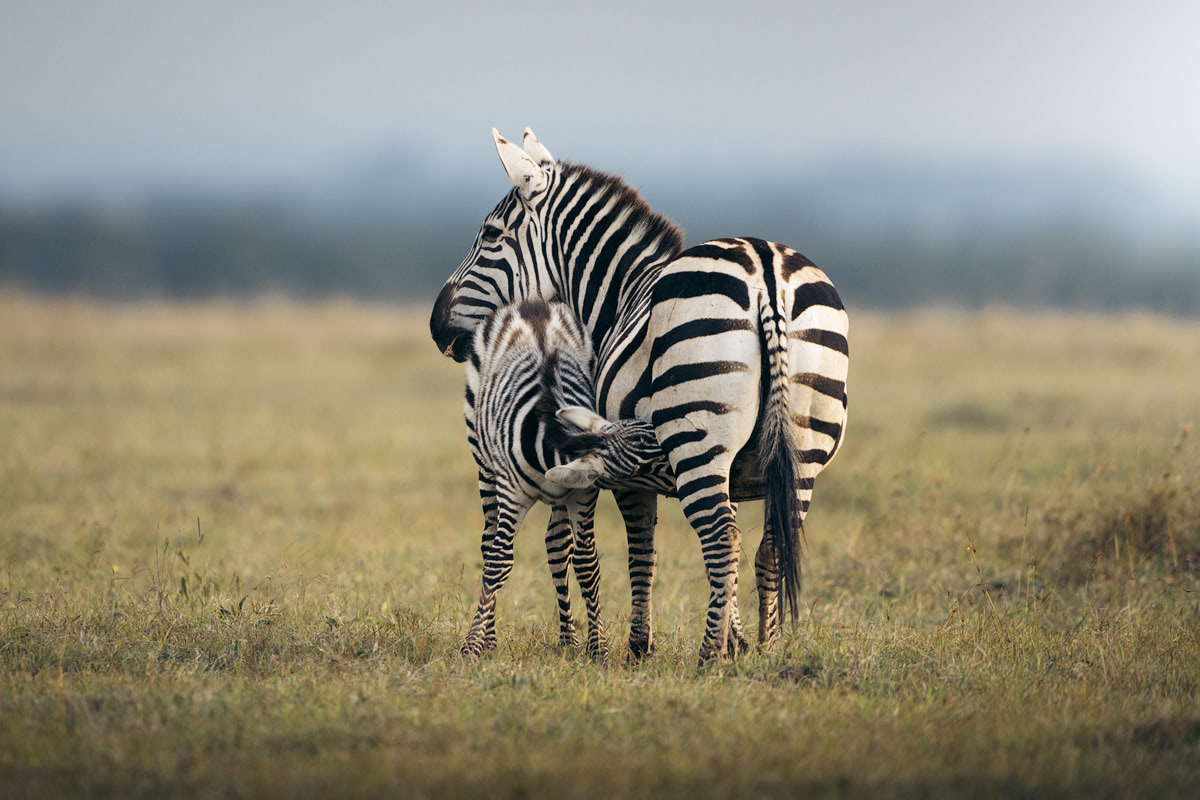
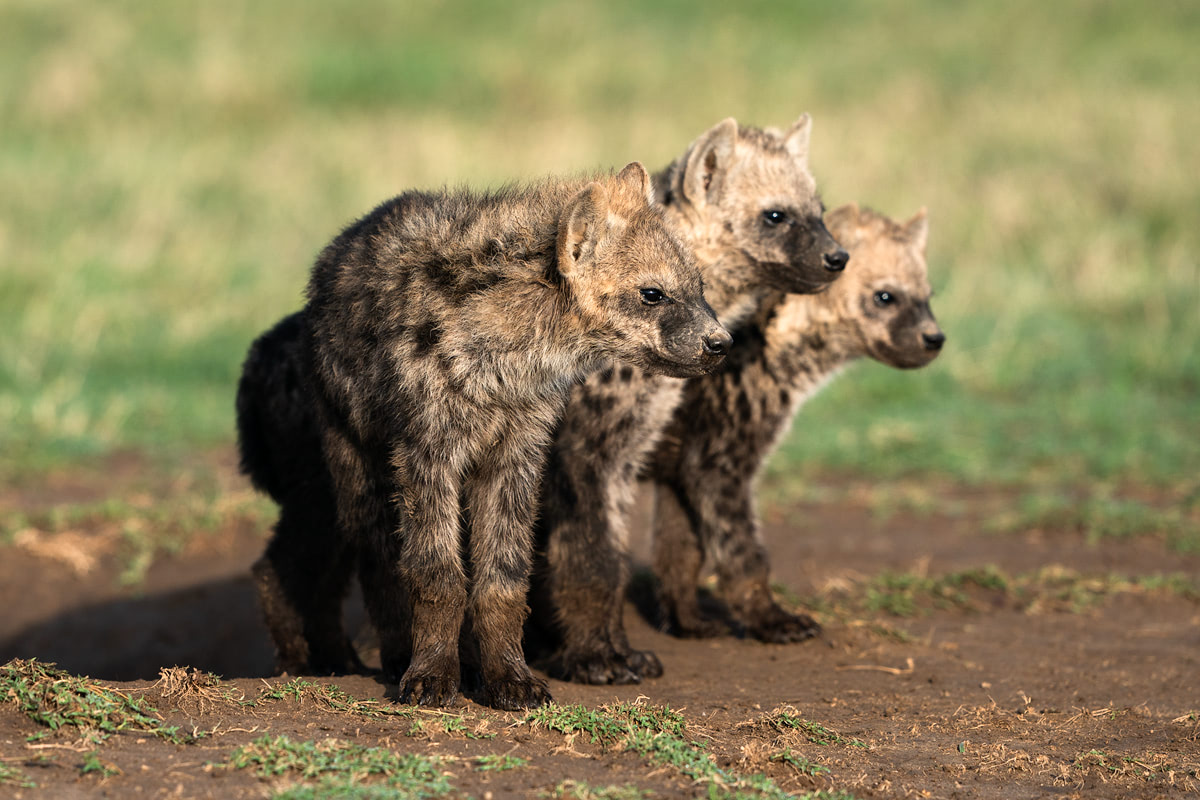
During our 5 night stay, we spotted just about every animal we hoped to see in Kenya. We saw elephant, lion, rhino, giraffe, hyena, antelope, zebra, warthog and so much more. The only one of the Big Five that we missed was the leopard. Which we actually heard from our tent at Bush Camp every night, but managed to elude our eyes during the stay. Other guests at Ol Pejeta Bush Camp saw the leopard on night drives but we just didn’t get lucky (next time!)
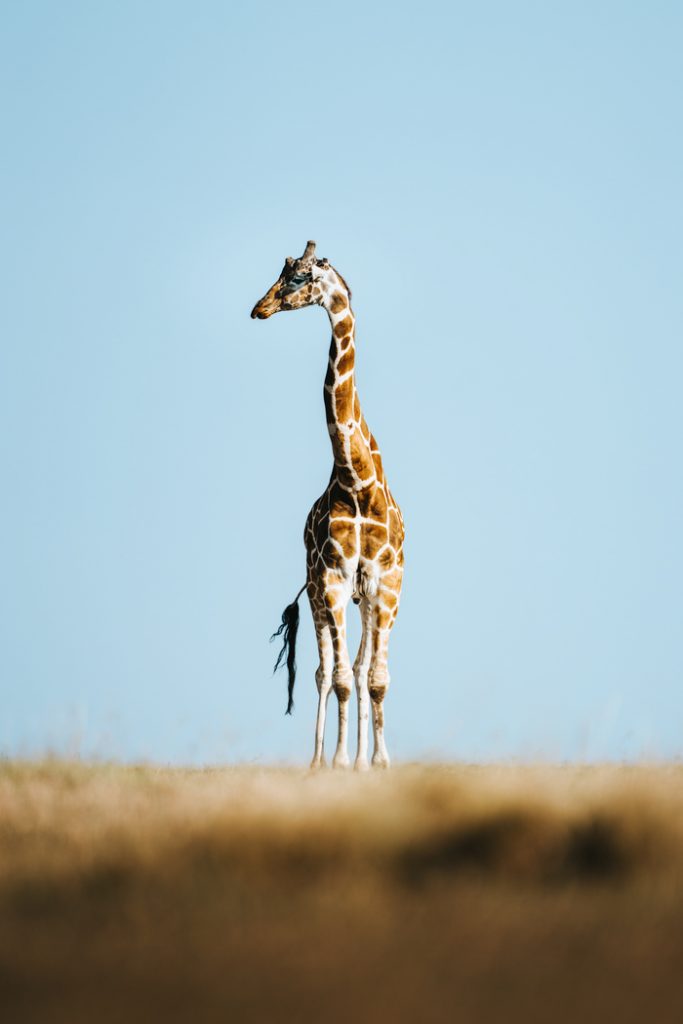
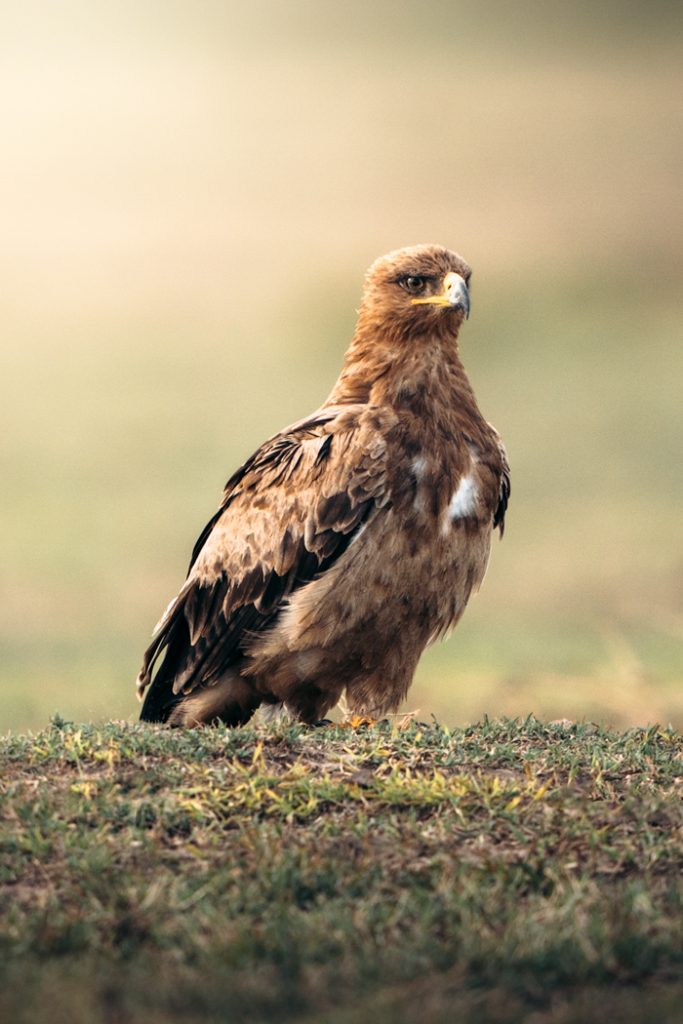
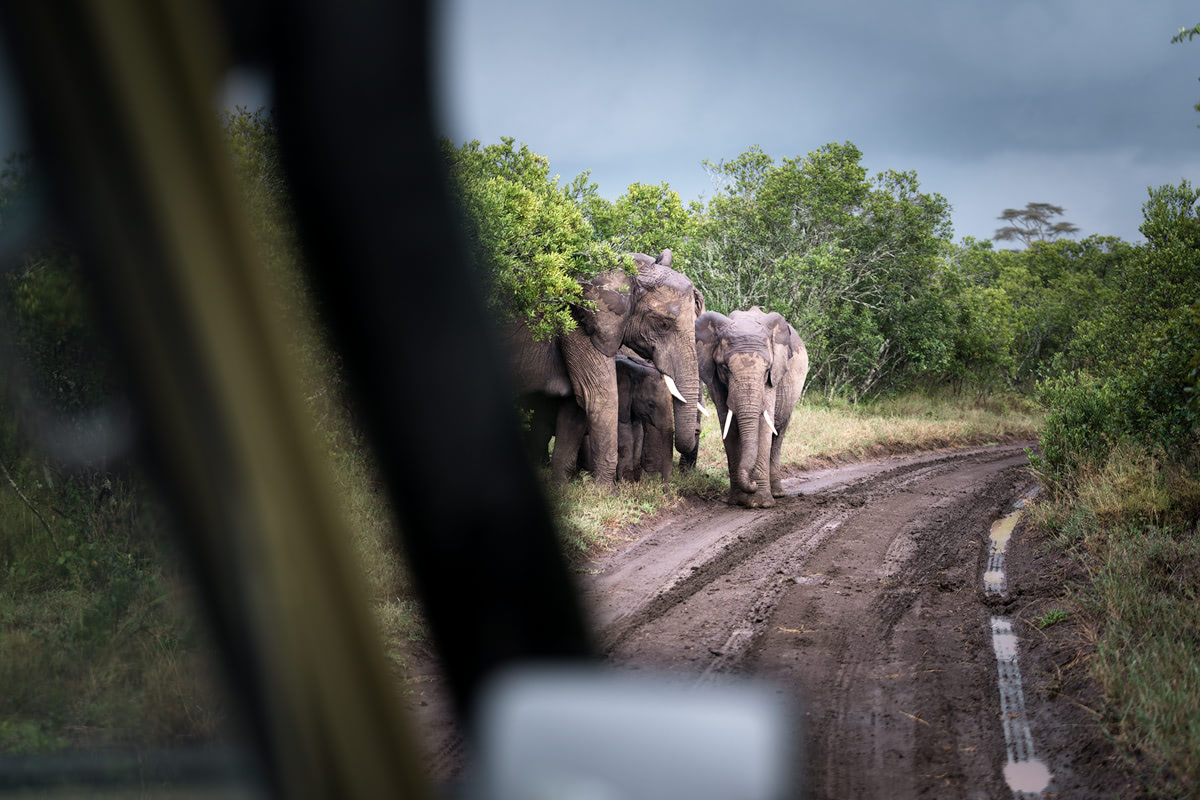
Some highlights from our game drive experiences included:
- A mother and baby elephant who were feeding right beside the road. We sat there and watched them as they grazed and eventually walked by right in front of our vehicle.
- Driving into the middle of a large group of giraffe who were feeding on some acacia trees. They didn’t mind us one bit and were happy to continue grazing and giving us a funny look here and there.
- Seeing black rhino in the wild for the first time was something we won’t forget.
- Coming across a den of hyena that was home to 3 babies. They were so fluffy and cute!
- Watching the sun rise and set on the Kenyan landscape. The sun was always the big red ball as it rose. And looked different than what we are used to. It was also incredibly beautiful watching first and last light on Mount Kenya.
- One night the staff at Ol Pejeta Conservancy took us on a night game drive. We were lucky enough to spot lions and hear the males calling for each other.
- Eating a delicious “bush breakfast” out in the wild during of our game drives. Such a surreal experience!
- Seeing countless different bird species every single day.
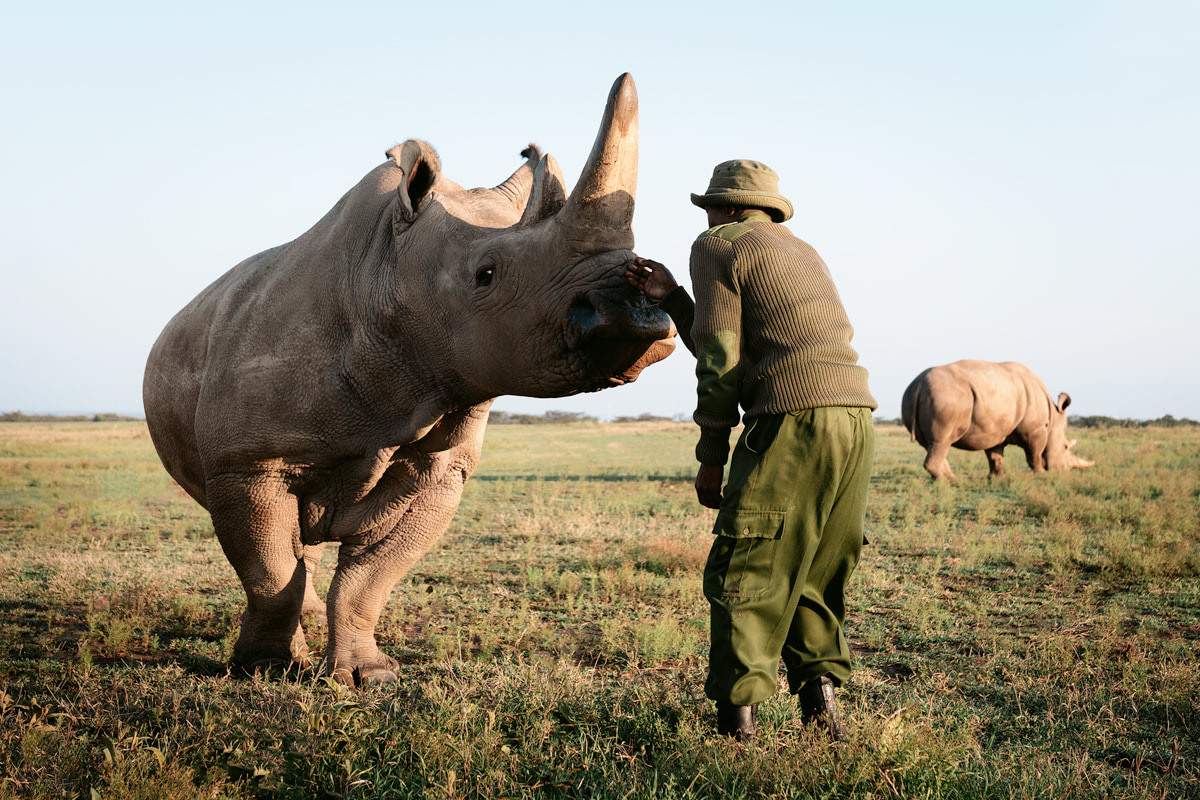
Endangered Species Enclosure
Ol Pejeta is home to the last two remaining northern white rhinos on the planet. Their names are Najin and Fatu, two females aged 30 and 19. Unfortunately, neither of them are able to carry a calf. And since the death of the last male (Sudan) last year, the fate of the northern white rhino was looking pretty grim. Thankfully, Ol Pejeta Conservancy and a team of scientists are working on a ground-breaking artificial insemination project that has seen them successfully create embryos from samples collected from Fatu, Najin. And the last remaining males before their passing. The plan is to now insert those embryos into a southern white rhino female who will hopefully be able to act as a surrogate mother and kick start the population of northern white rhinos once more.
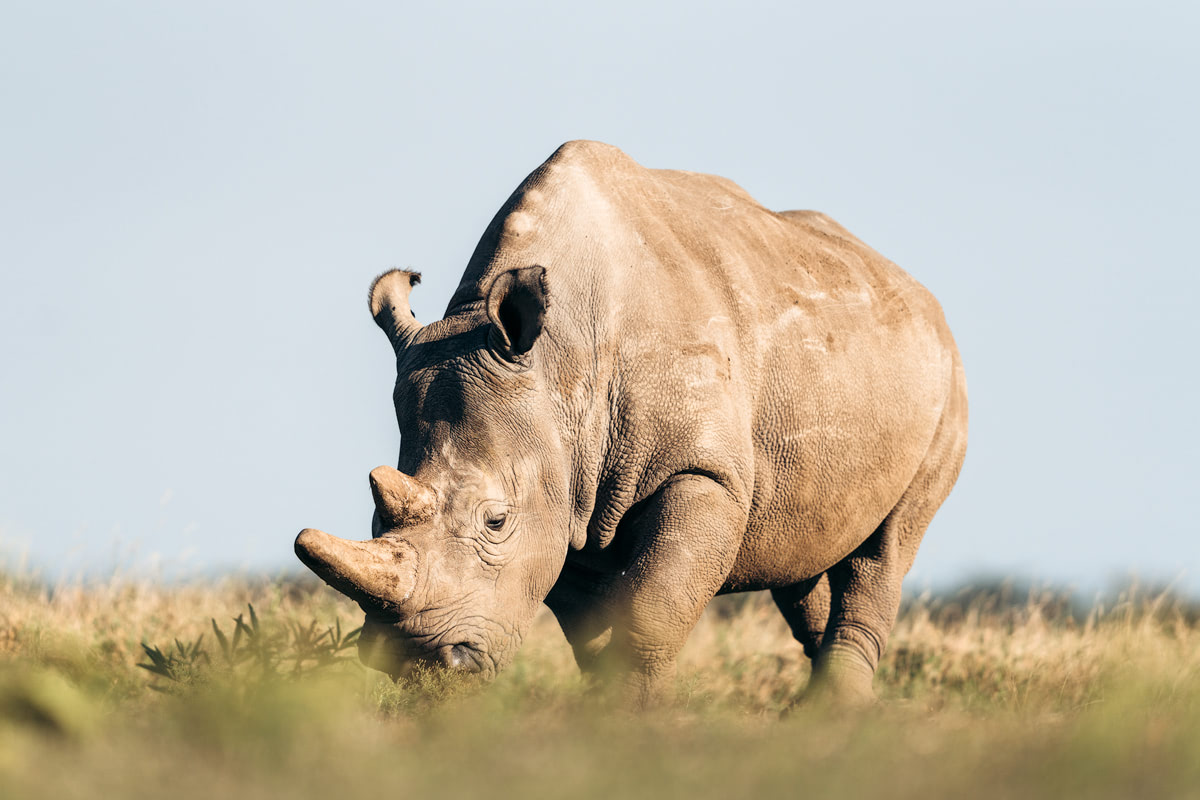
During our time at Ol Pejeta, we were lucky enough to meet Fatu and Najin and their amazing caretakers. The whole experience was beyond amazing! For such huge creatures, they were incredibly gentle. We entered their enclosure and they immediately seemed happy to see us. This may have had more to do with the fact that their handlers had a carrot treat for them. But I like to pretend otherwise haha. We watched as they had their treat. Then continued to graze on the grass right by our vehicle.
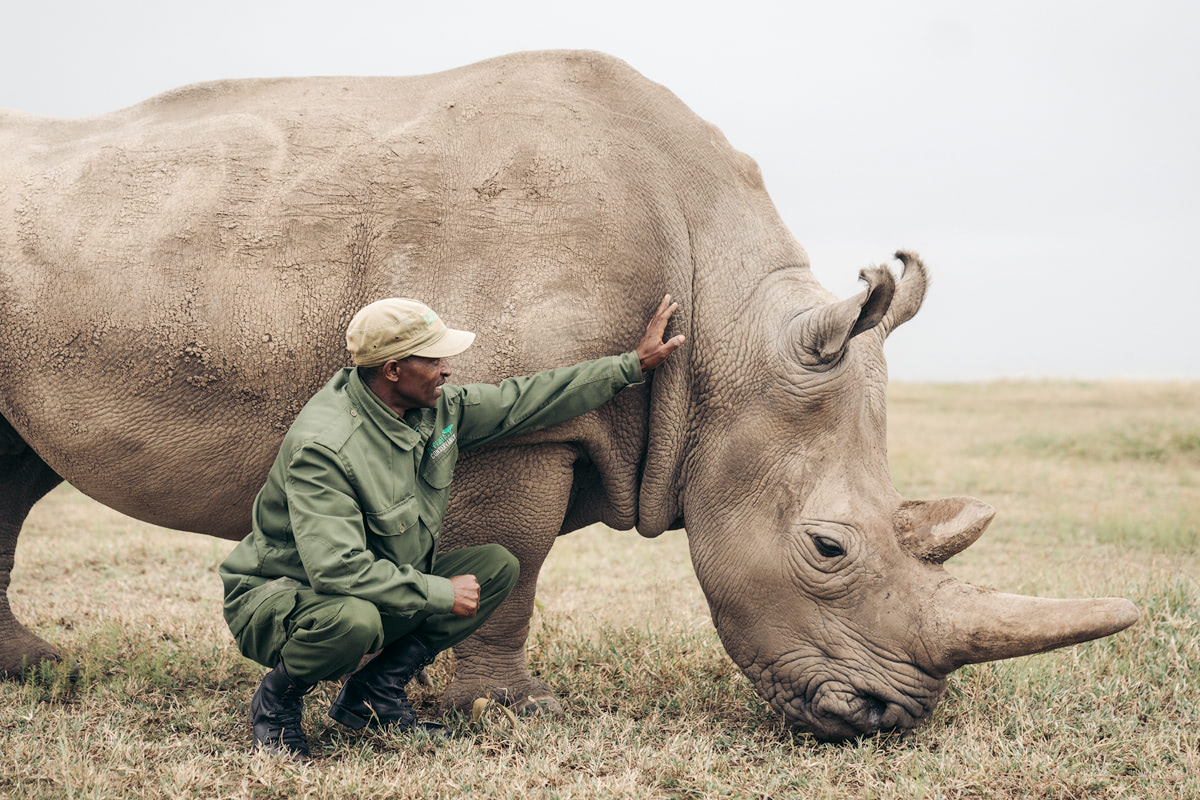
Their handlers, James and Zach, told us all about Fatu, Najin, and the effort of Ol Pejeta to save the species from extinction. It was clear that these men were incredibly passionate about the work they were doing here. Zach and James have been working with these rhinos for years. And determined it was safe on this day for us to get a closer look. I was even able to hand-feed one of them their daily carrot treat! I will always be thankful for that experience and everything Ol Pejeta are doing for this amazing species.
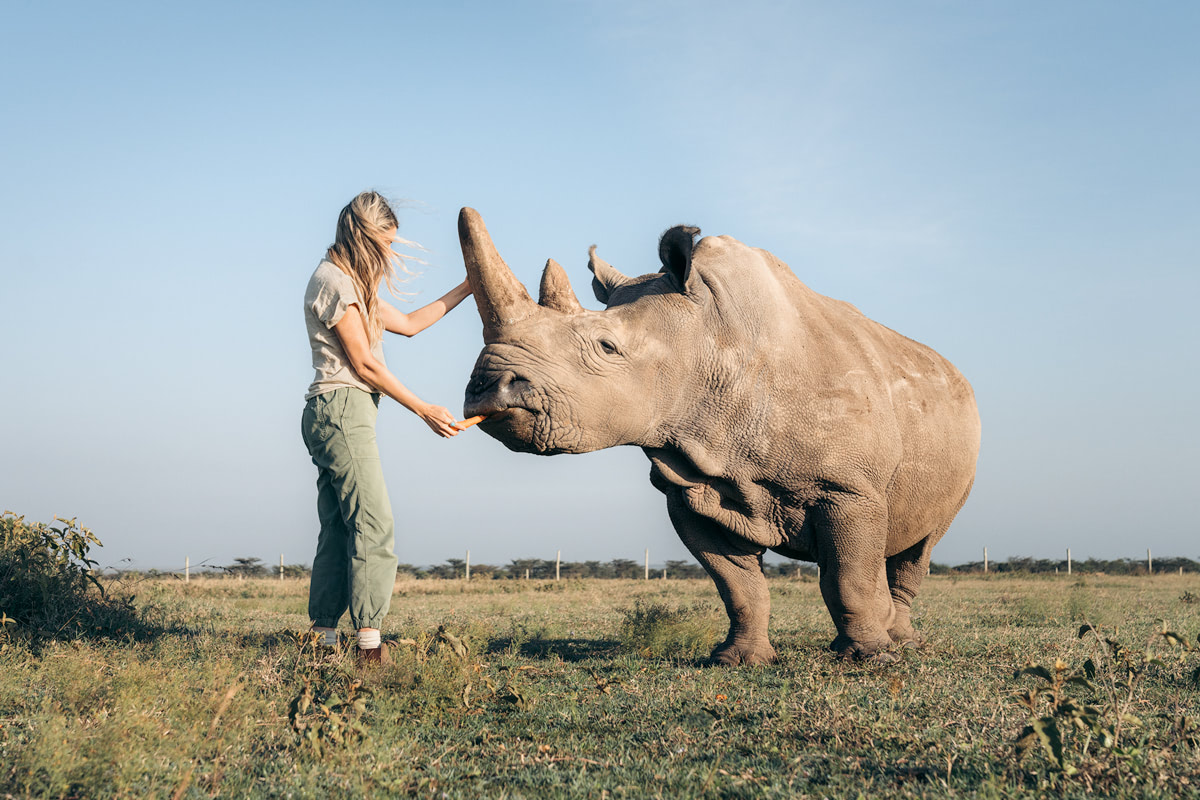
We finished up our time with Fatu and Najin and moved on to visit a blind, black rhino named Baraka. Sadly Baraka lost one eye defending his territory from another rhino. And the other developed a cataract, rendering him completely blind and unable to survive in the wild. He now lives in a 100 acre enclosure and was incredibly friendly. He even let us give him a scratch while we fed him some plants – such a cutie! During our time at Morani, we were also able to check out the Information Center and learn some really interesting facts about the conservancy and Kenya’s wildlife.
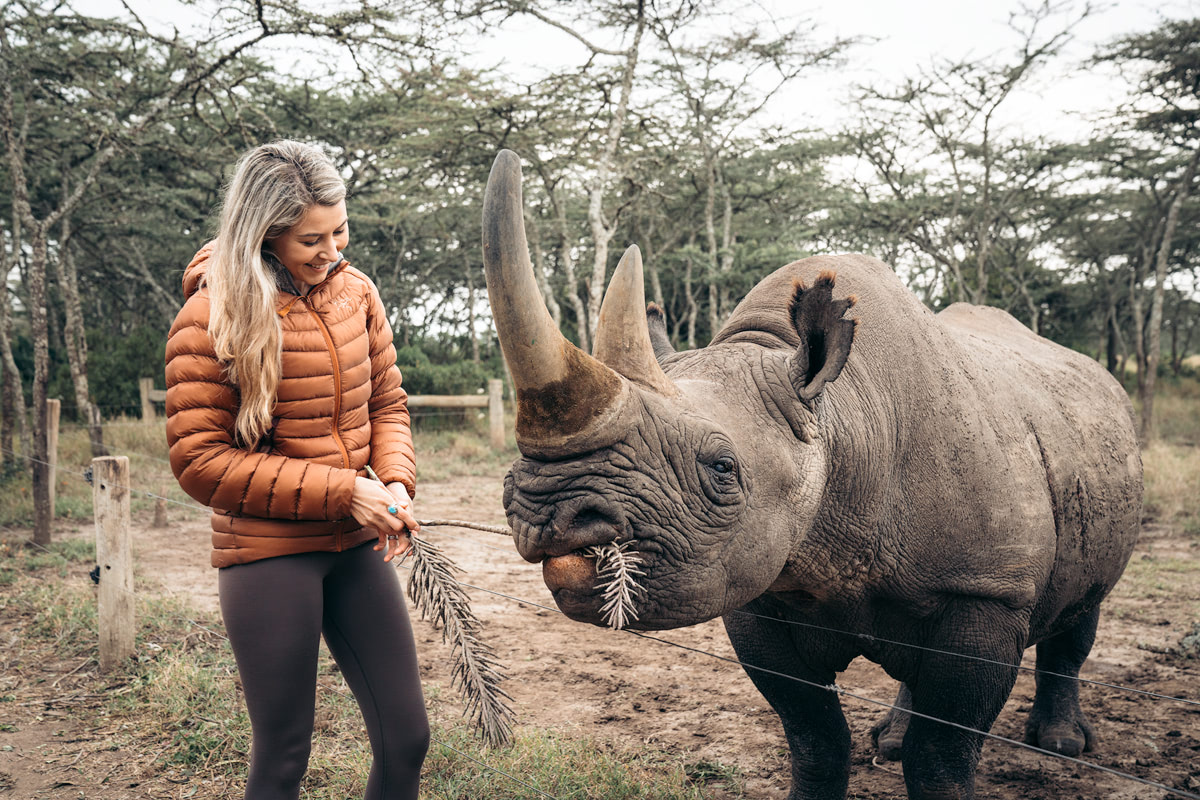
Overall, visiting Najin, Fatu, and Baraka was an experience that I will never forget. Hopefully with the efforts of the team at Ol Pejeta, the beautiful northern white rhino species will one day thrive again in the wilds of Kenya. Click here for more information on meeting Najin and Fatu.
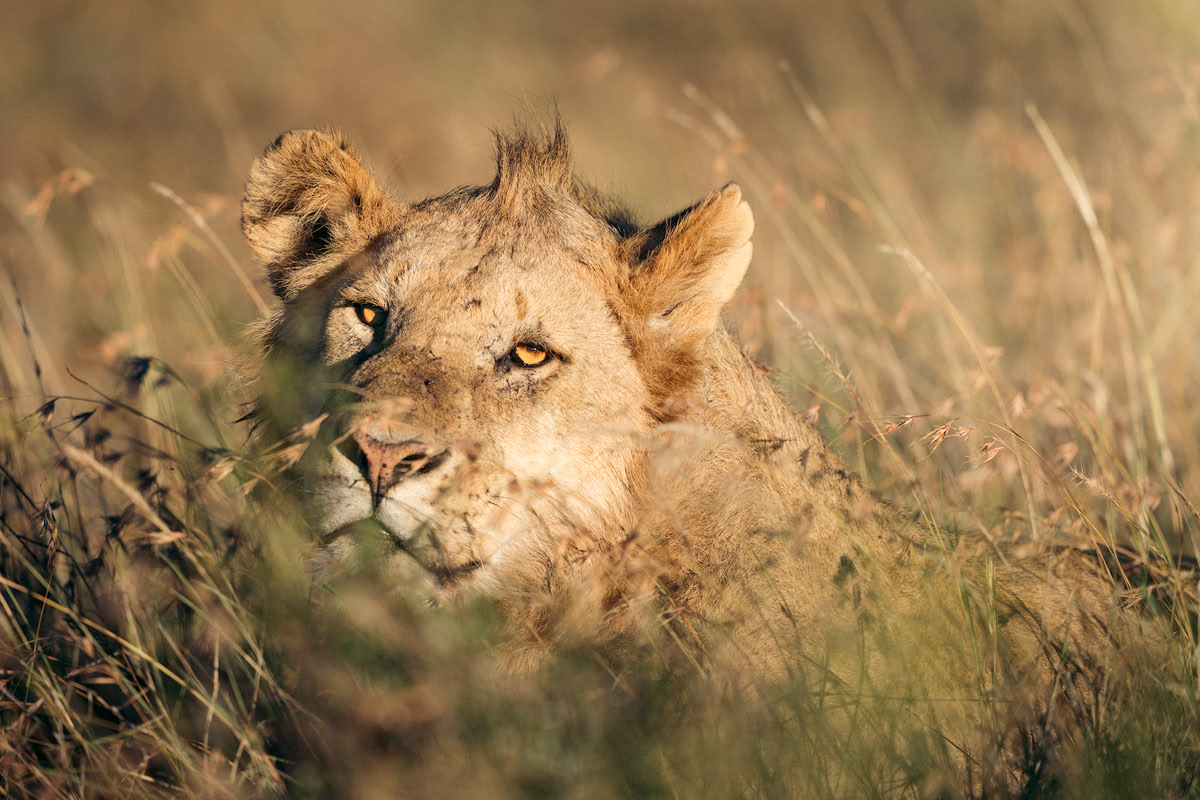
Lion Tracking
One of our favorite activities at Ol Pejeta was the lion tracking. We were picked up in a safari-ready 4×4 with two guides up front. One was the driver, another held a device that looked like it was straight out of WWII. It was a large box, with a cord that worked its way up to a portable antenna which the guide waved around as we drove through the plains. As we worked our way around the conservancy, he was standing on the seat, body through the sunroof, antenna in the air, and the large box held to his ear. On occasion, we would stop for a minute or so while we moved the antenna in different directions, and off we would go again.
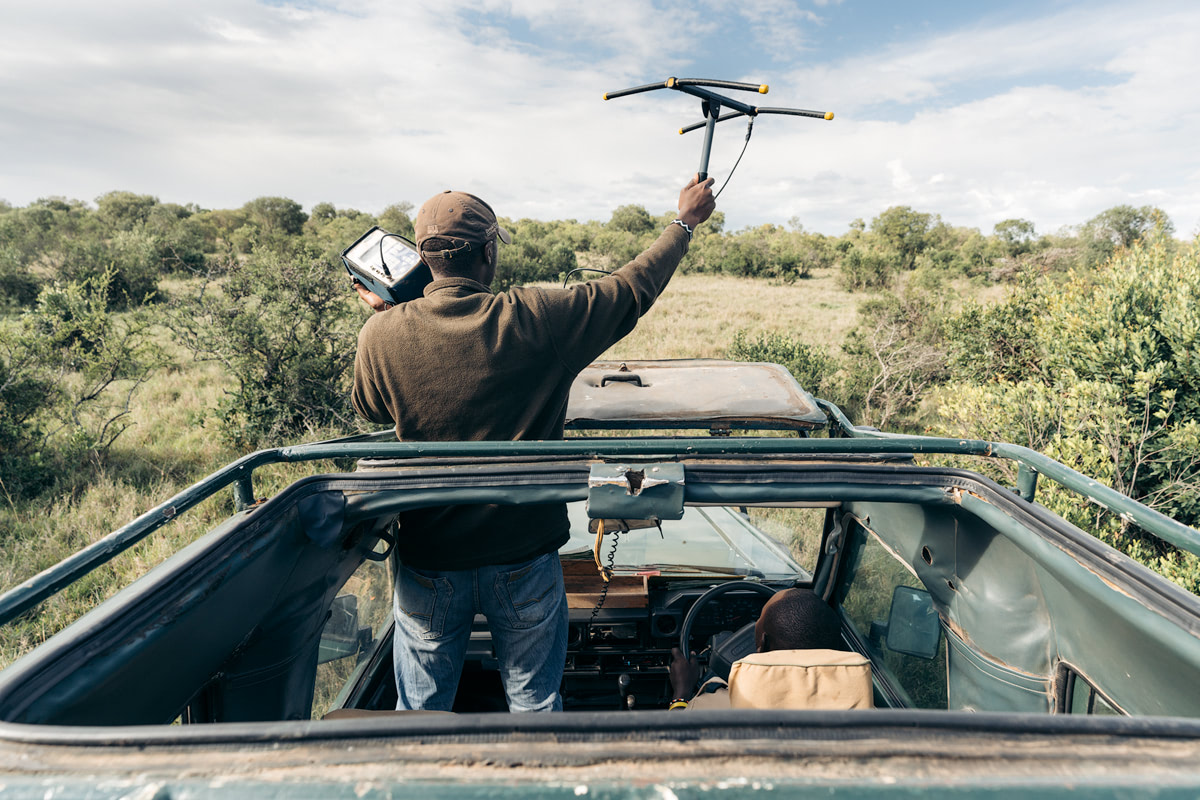
We were told that the antenna picks up a frequency from the collar that is attached to one member of every lion pride in the conservancy. This is the method they use to track the prides for research. As we got closer to the pride we were looking for, the beeping would get louder and more frequent. And ultimately this is the way in which we would find the lions. As we got closer, we left the main road and headed off through some bumpy terrain and into the brush. It wasn’t long before we came upon a pride of 11 lions, most of which lying down for an afternoon nap, most likely still digesting a meal from the day prior.
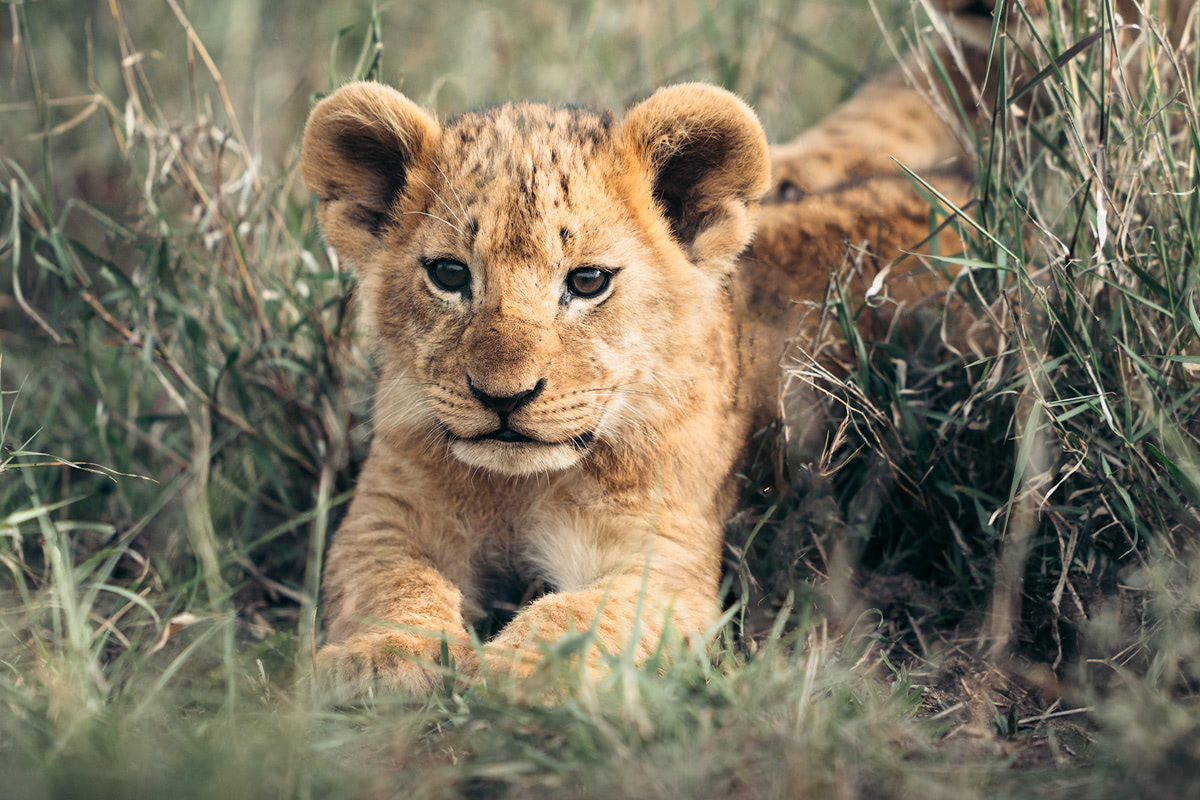
We were able to spend an hour or so with the lions, watching as 5 cubs played and annoyed their poor mothers who were just trying to nap. When the cubs weren’t running around like maniacs, they were chewing on the last of the meat that was left on an impala skull. This was such a dream come true… not only to be within such close viewing distance of these beautiful lions, but to also have the pleasure of watching the cubs play and learn techniques they would use as they get older.
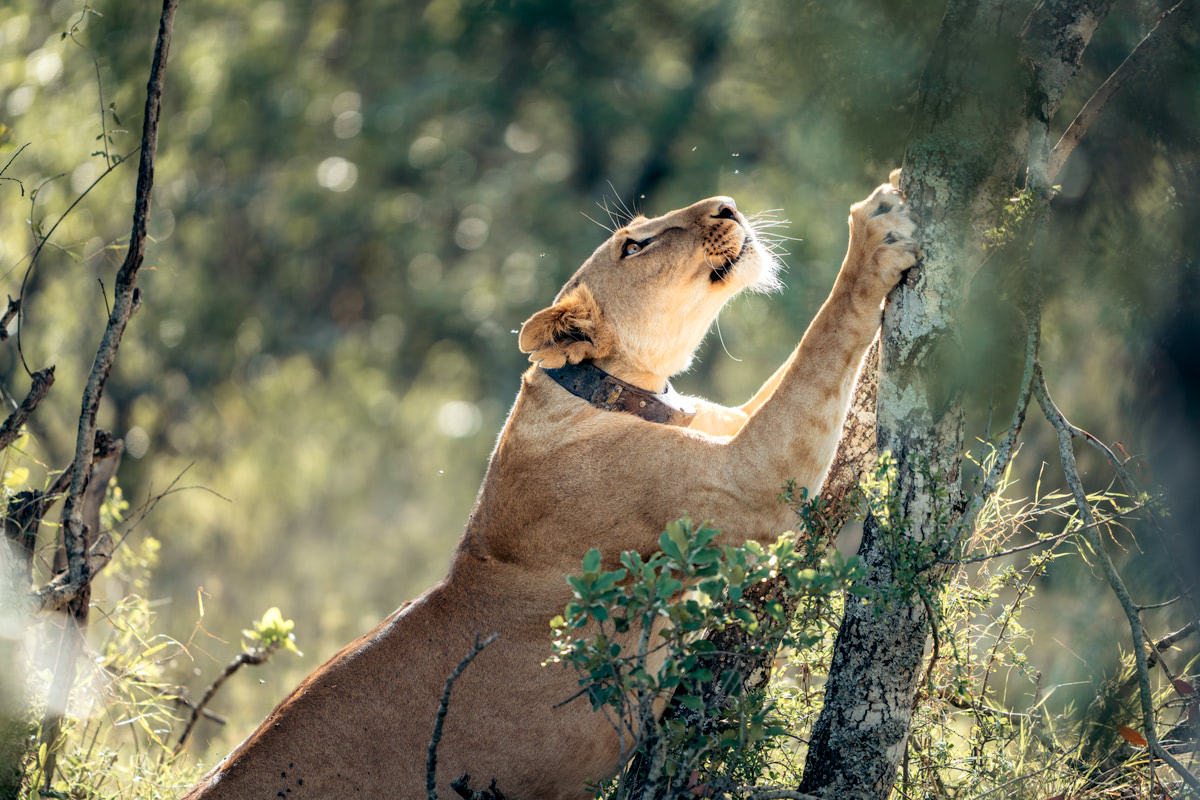
If you are coming to Ol Pejeta I can’t recommend this activity enough! It really is the best way to get up close to the lions. And the guides were so open to answering all of our questions. Also, by booking these activities you are contributing to conservation efforts and helping to protect these beautiful animals. Click here for booking information.
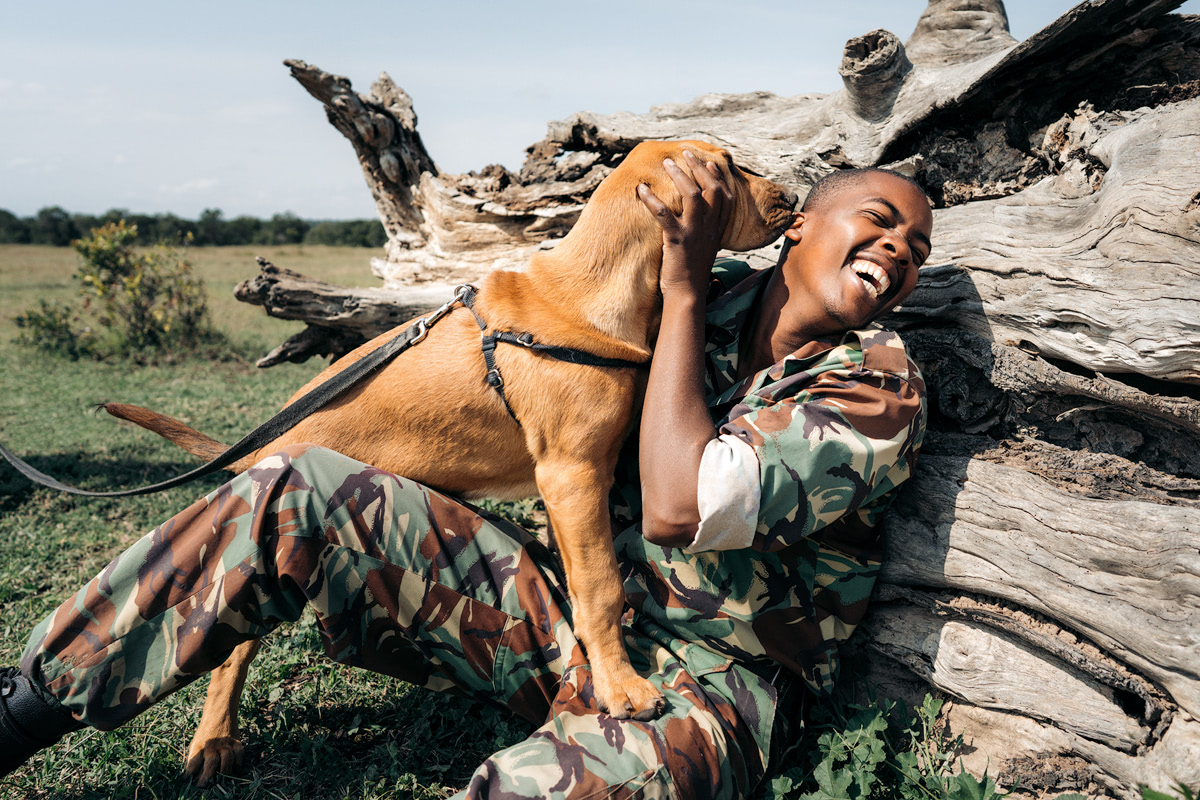
K9 Dog Unit
The K9 Dog Unit is a vital piece that helps to keep Ol Pejeta Conservancy free of poachers. We were lucky enough to spend a few hours joining them on a routine training run with their 8 month old bloodhounds. First off, we jumped into the back of their truck which was absolutely full by the time Matthew and myself, the 10 or so K9 Unit team members, and the 8 dogs fit in the back.
We drove out into the plains and made our first stop. The team jumped out and split into groups of about 3, each with one dog. One person would hold the dog (on leash). While another ran out with a treat into the distance. They would then hide behind something like a bush or log. And then the dog had to follow the scent to find the treat. Once they found the person with the treat, they would get fed by jumping up on the trainer. This taught them to always jump on the poacher once they caught them. Each dog would repeat this process three times. And then they would go back into the vehicle while another dog had its turn.
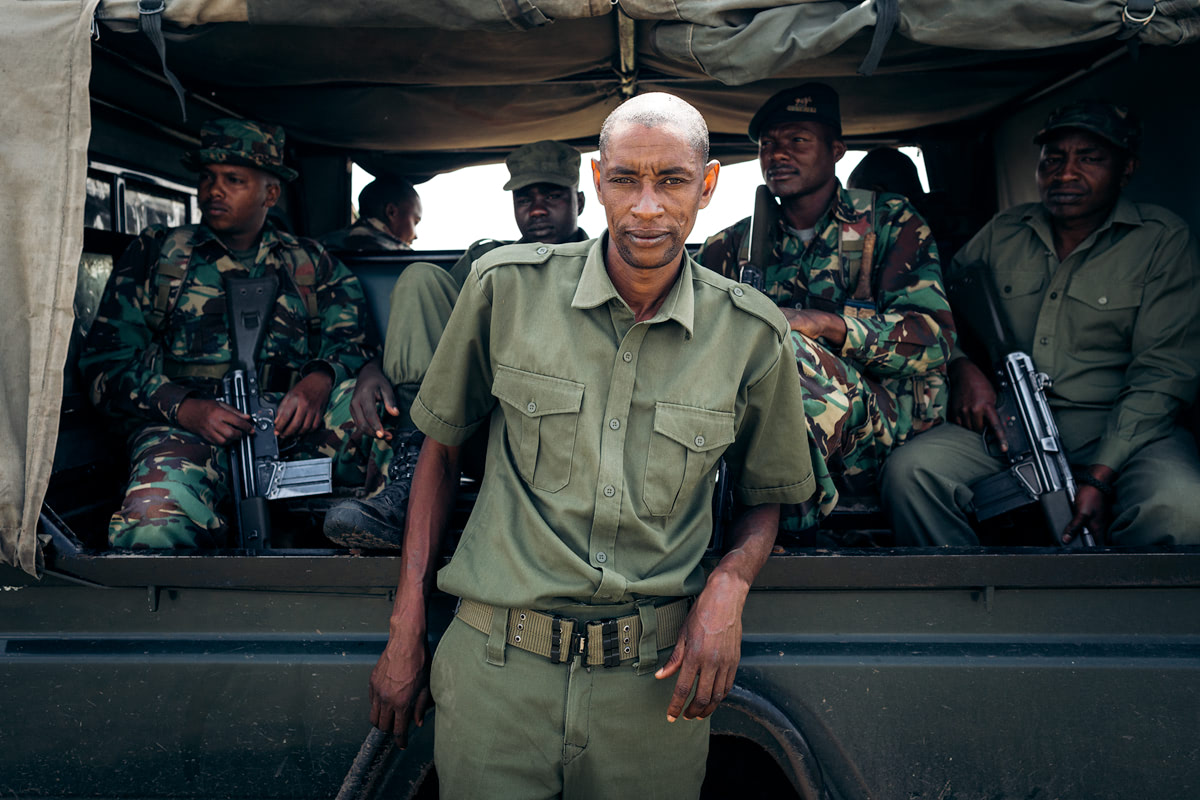
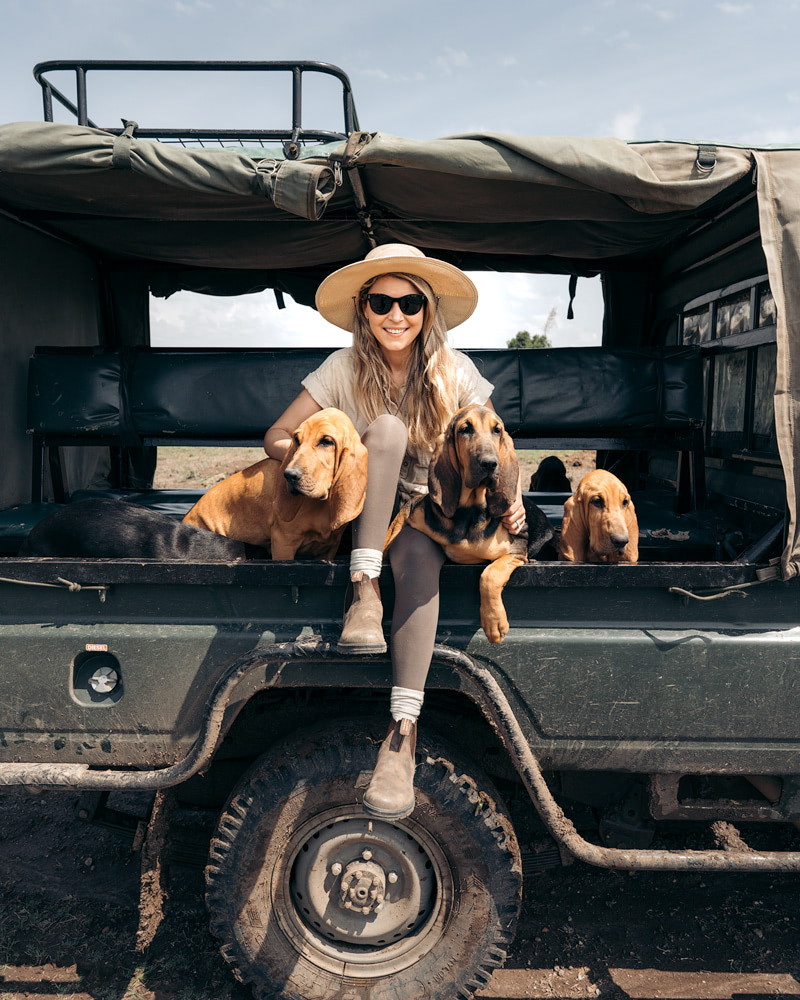
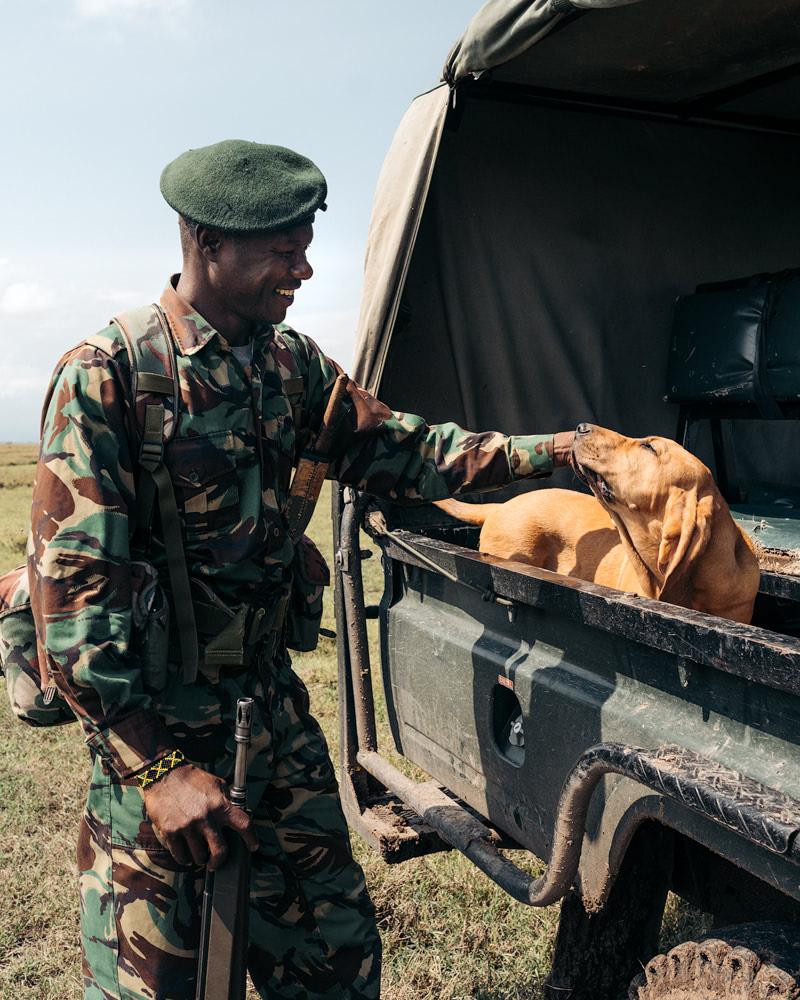
The whole training session took around 2-3 hours, and we had an absolute blast running through the plains with the dogs while they leveled up their tracking skills. It was also really incredible to see how much the K9 team loved these animals. And really cared about what they were doing to protect the conservancy. Anyone visiting Ol Pejeta Conservancy can book in a dog tracking activity. You’ll have the chance to take a tour of the kennels, meet the amazing blood hounds, and witness their special sniffing talents! Click here for more information.
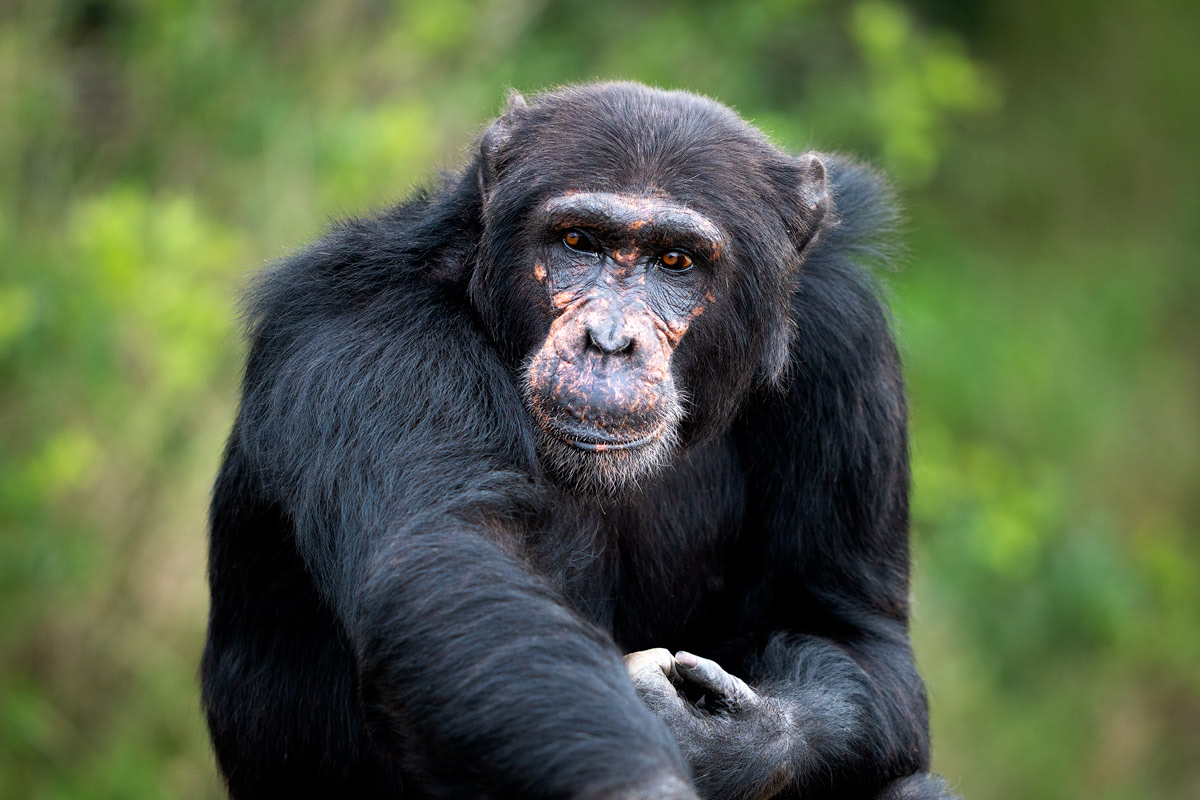
Rescued Chimpanzees
Ol Pejeta is home to around 50 rescued chimpanzees who now live in a huge sanctuary built to mimic their natural habitat. These animals are not native to Kenya. But were originally rescued from various terrible situations around Africa where they were being mistreated by humans. The Sweetwaters Chimpanzee Sanctuary was established in 1993 with an agreement between the Ol Pejeta Conservancy, the Kenya Wildlife Service and the Jane Goodall Institute. It’s was incredible to see the important work this sanctuary are doing!
After arriving at the conservancy, the chimpanzees are nursed back to health in a quarantine area, and then released into the sanctuary with access to 24/7 veterinary staff. The chimps are put on a regular feeding schedule, and other than being kept inside at night, they spend their time climbing, socializing and learning to be normal chimpanzees again.
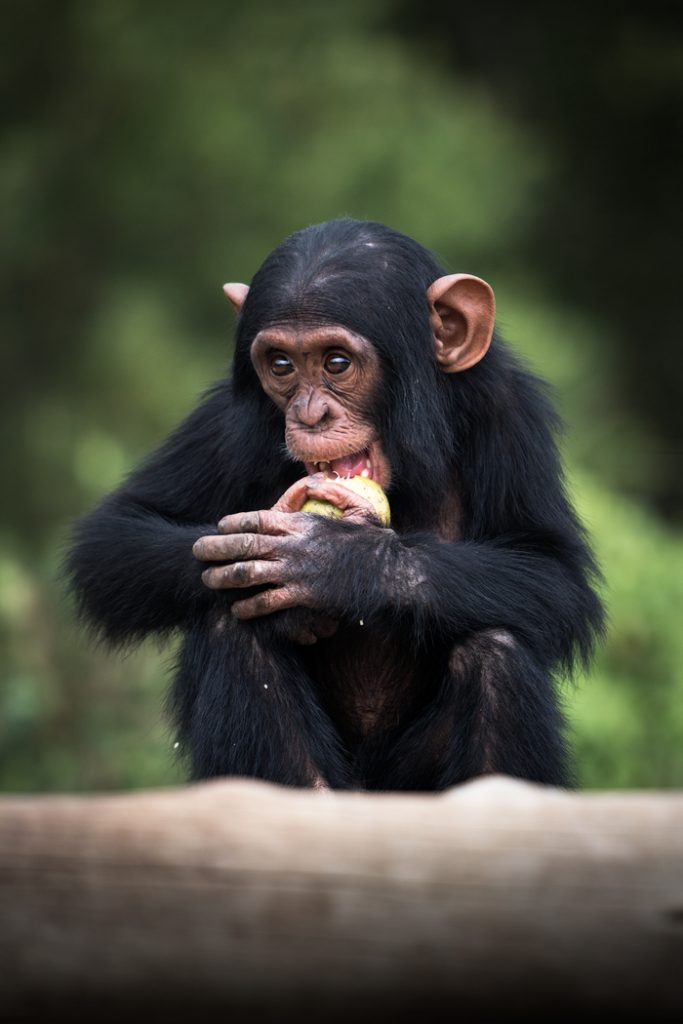
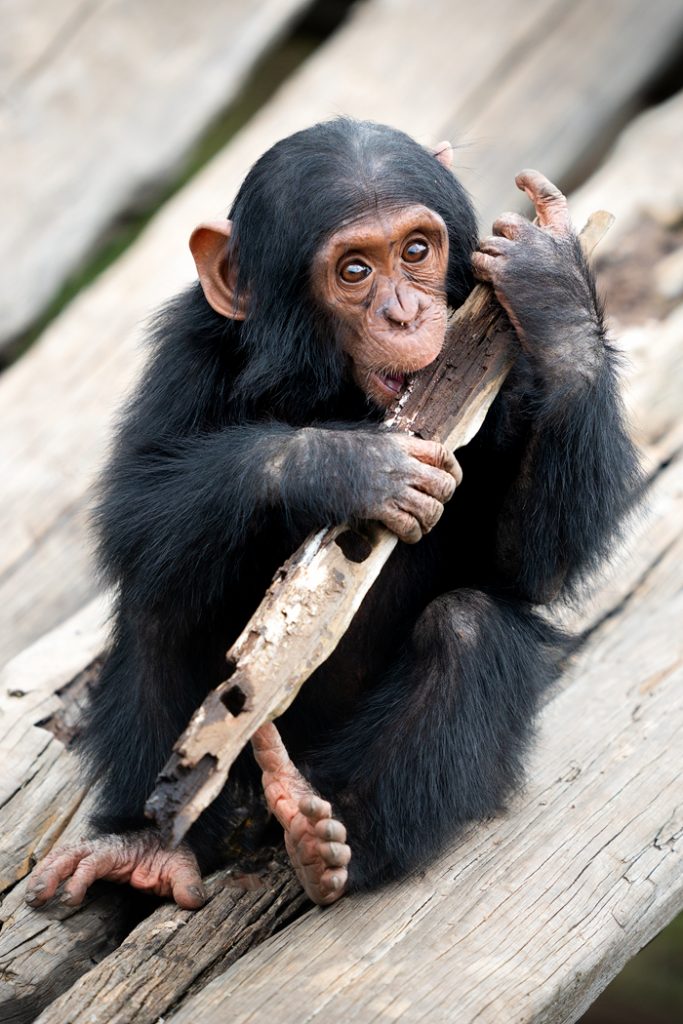
We arrived at the Sweetwaters Chimpanzee Sanctuary at lunch time for a behind the scenes look at one of their feeding sessions. It was pretty amazing to see just how much these animals act like humans… and it really made me think about the kind of horrible people who could mistreat these chimps in such a cruel way. The handler was an incredibly passionate man and has dedicated many years to making sure these animals are rehabilitated from the terrible state that they arrived in.
We watched as he threw many different types of fruits into the enclosure, and surprisingly the chimpanzees were quite good at waiting for the handler to call their name signaling it was their turn to eat. Hilariously, once finished a couple of the chimps would often hold out their hands for more, or clap and then stick out their hand.
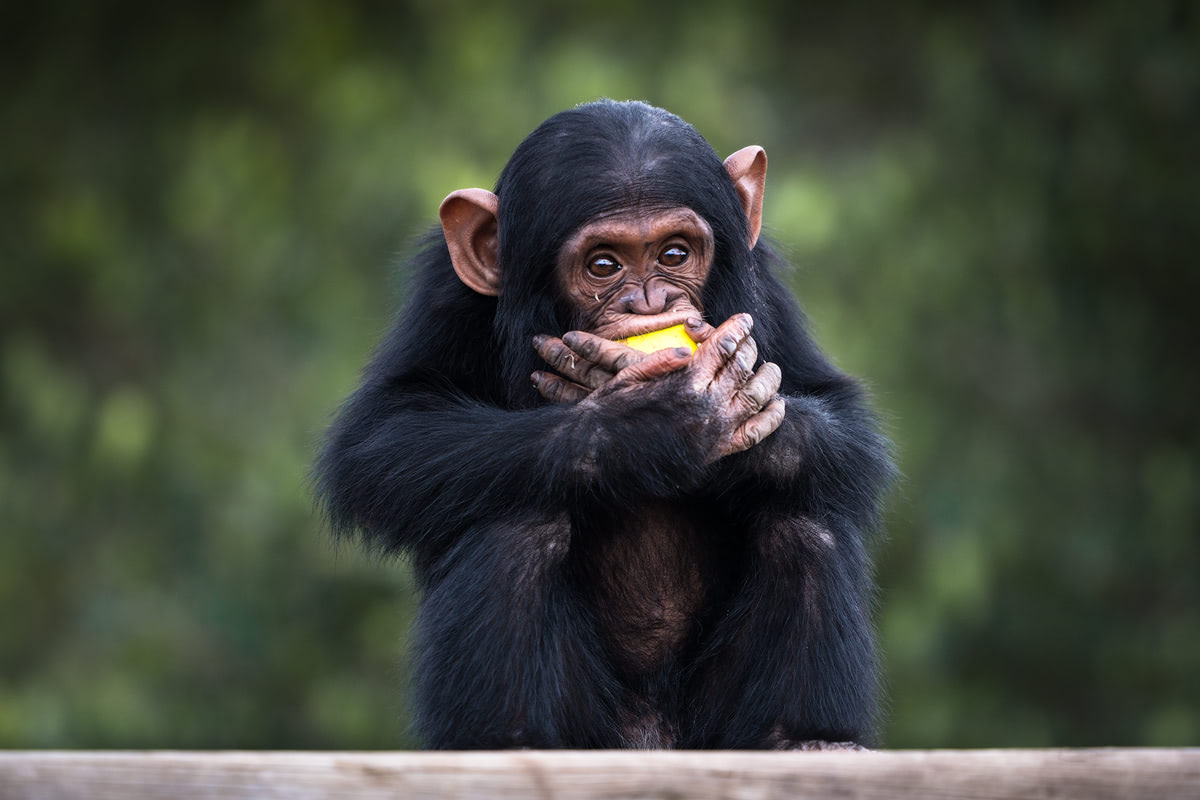
Due to an unfortunate failure of birth control measures, a new (and very cute!) baby chimp had been born into the sanctuary. It was adorable to watch him run around and play with his mother. From what we could see, it really seemed like the animals were loving their new chance at life, and we left very happy that these animals had such an amazing team helping them live like chimps again after such traumatic experiences. Click here for more information on having your own behind-the-scenes experience with the rescued chimpanzees at Ol Pejeta.
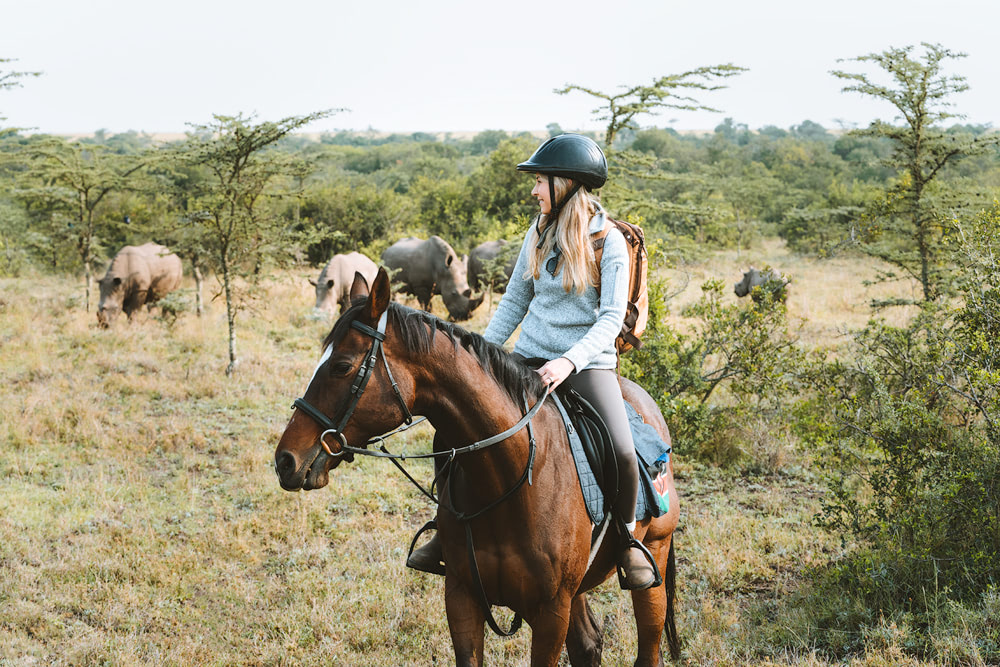
Horse Riding
One of my favorite activities during our stay at Ol Pejeta Conservancy was horseback riding! I grew up on a farm in Australia and rode competitively for a lot of my childhood and teenage years. It’s something that I very much miss and always enjoy getting in some horse riding adventures during our travels.
The Ol Pejeta horse stables are located at Morani. I was very happy to see that the horses were kept in amazing condition and very much cared for by their passionate team of caretakers.
Once we saddled up, our guide started by taking us through the northern white rhino enclosure. It was awesome to see Najin and Fatu again and they were not fazed by us and the horses at all. After this we headed out into the other section of predator free sanctuary. We ducked in and out of the bush, and even got pretty close to a mother black rhino with a calf before she gave us a sign to move on. Such a cool experience!
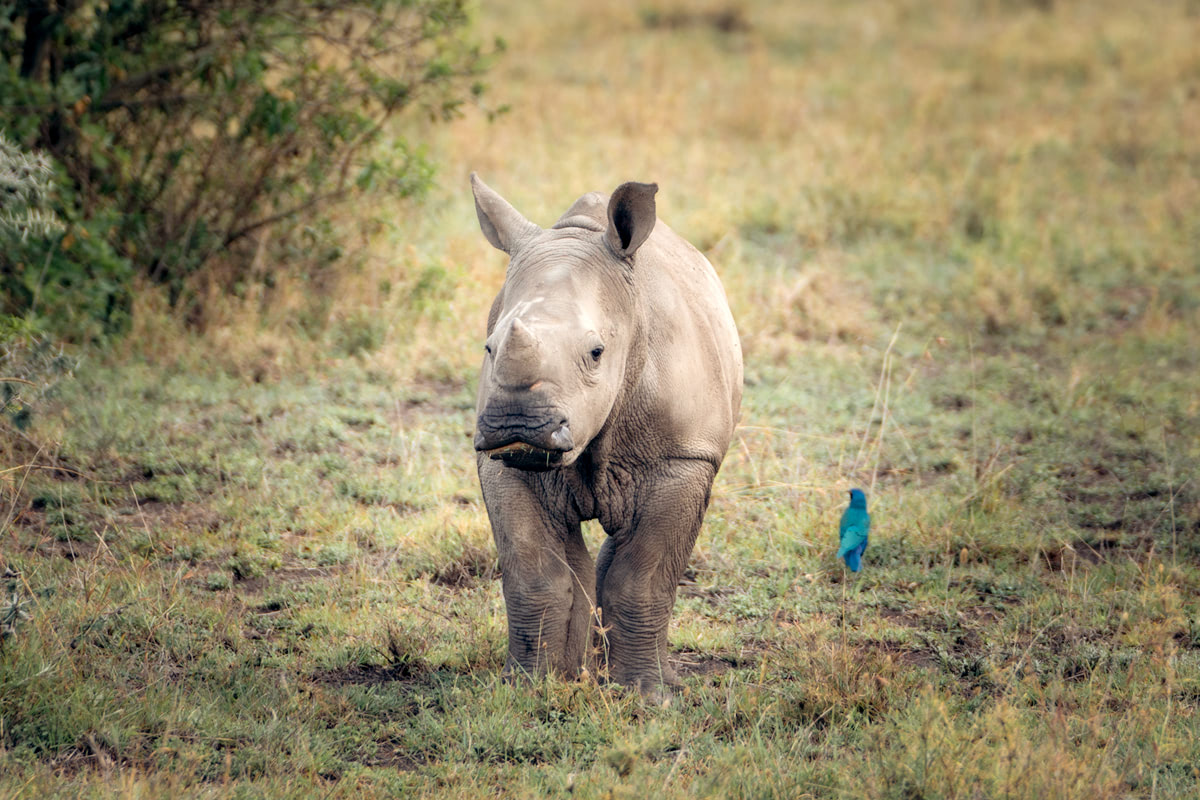
Our guide then took us out into the wild section of the conservancy, where we were roaming with lions, elephants, etc. He assured us that it is very safe and no issues have occurred in the past. It seems that the wild animals don’t really care about the horses and just continue going about their everyday life. It was a really unique experience wandering through the plains on horseback… and our guide even let me go for a little canter!
Overall we were out for a couple of hours and it was a lot of fun. This activity can cater to a wide variety of skill levels, so don’t be turned off if you have never ridden a horse before. We took it pretty easy as Matt is not the most confident on horseback, and he said that he had a blast! Click here for more information on horseback riding at Ol Pejeta.
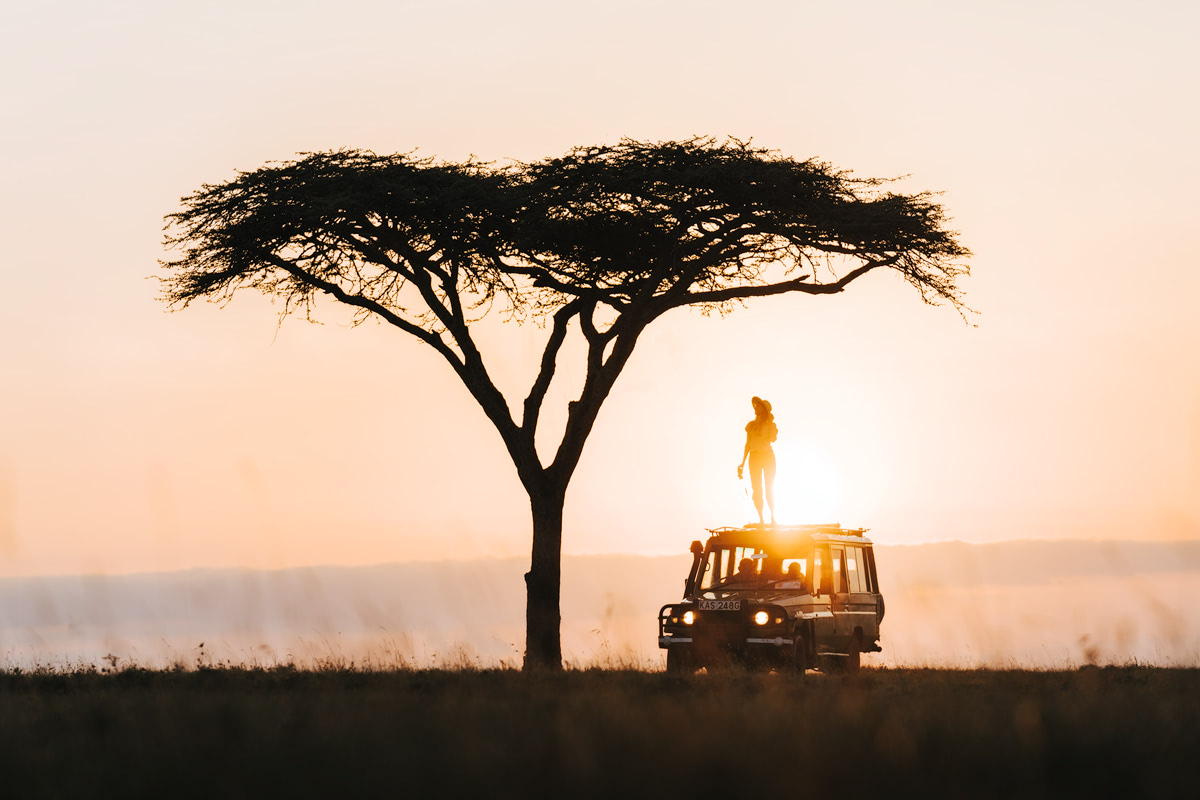
Staying at Ol Pejeta Bush Camp
For the duration of our stay at the conservancy we were hosted by Ol Pejeta Bush Camp, which is run by Asilia Africa. When you drive into Ol Pejeta Bush Camp it feels like a little hideaway nestled within the trees. Upon arrival, we were greeted by the friendly staff and taken to the mess hall for a brief rundown of the accommodations and how things work at camp. The mess hall is a large, open canvas tent that is used as a communal area and dining hall. It has incredible views over the river to a lush, open area where we were lucky enough to spot elephant, buffalo and antelope during our stay! The mess hall also has a beautiful seating area around a fireplace which we absolutely loved at night time, and drinks were always available.
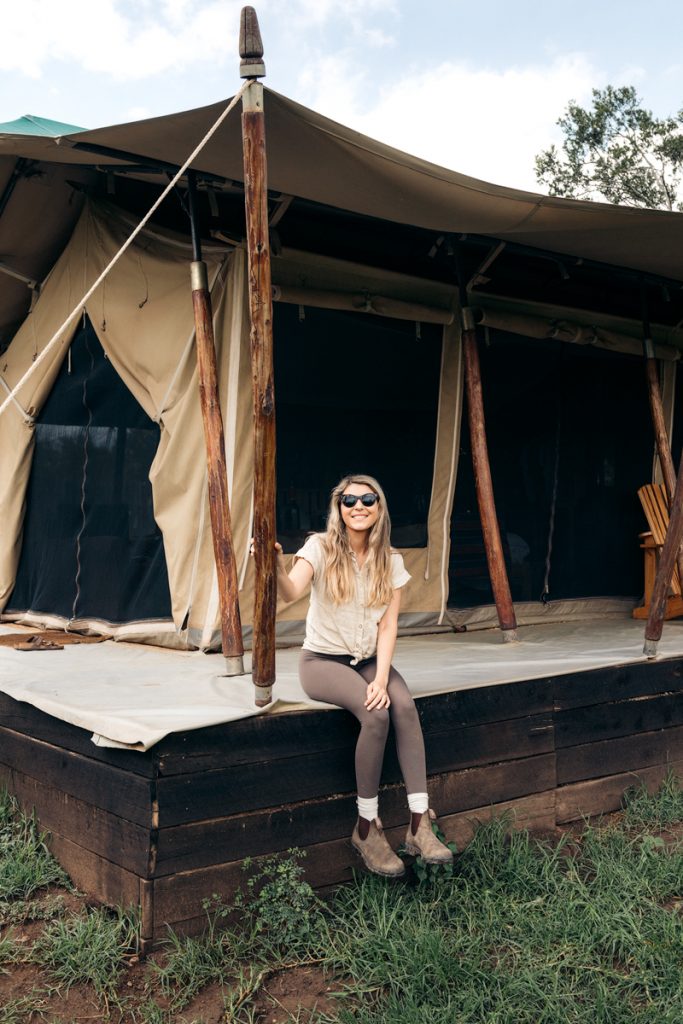
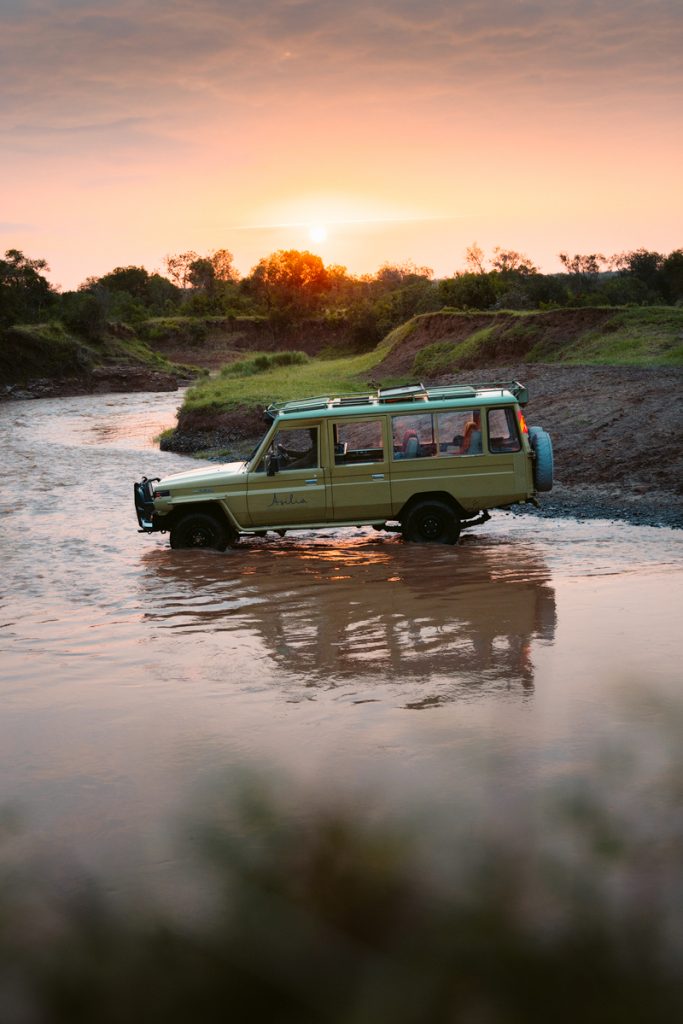
Next we were taken to our tent, which was a short walk from the mess hall. Although it was a tent, it was not like any tent we are used to staying in! The rooms at Ol Pejeta Bush Camp are large, canvas tents, each with a beautiful deck from which you can look over the river and watch any wildlife that may be in the area. There is a king sized bed, electricity, and running tap water, so we never felt like we were missing out on any major necessities that might come with a regular hotel room. The only thing that differs largely from a regular hotel room is that to have a shower you must request a time and they will bring you the hot water.
It is then put into a little pulley system which feeds into your “bush shower” in the room. Also, at night time, if you want to go to the mess hall, you must use your radio and request one of the staff to come and escort you there. During our stay at Bush Camp there had been a leopard wandering through camp during the night (we actually heard it every night from our tent!), so they are always cautious to make sure their guests are getting around safely in the dark.
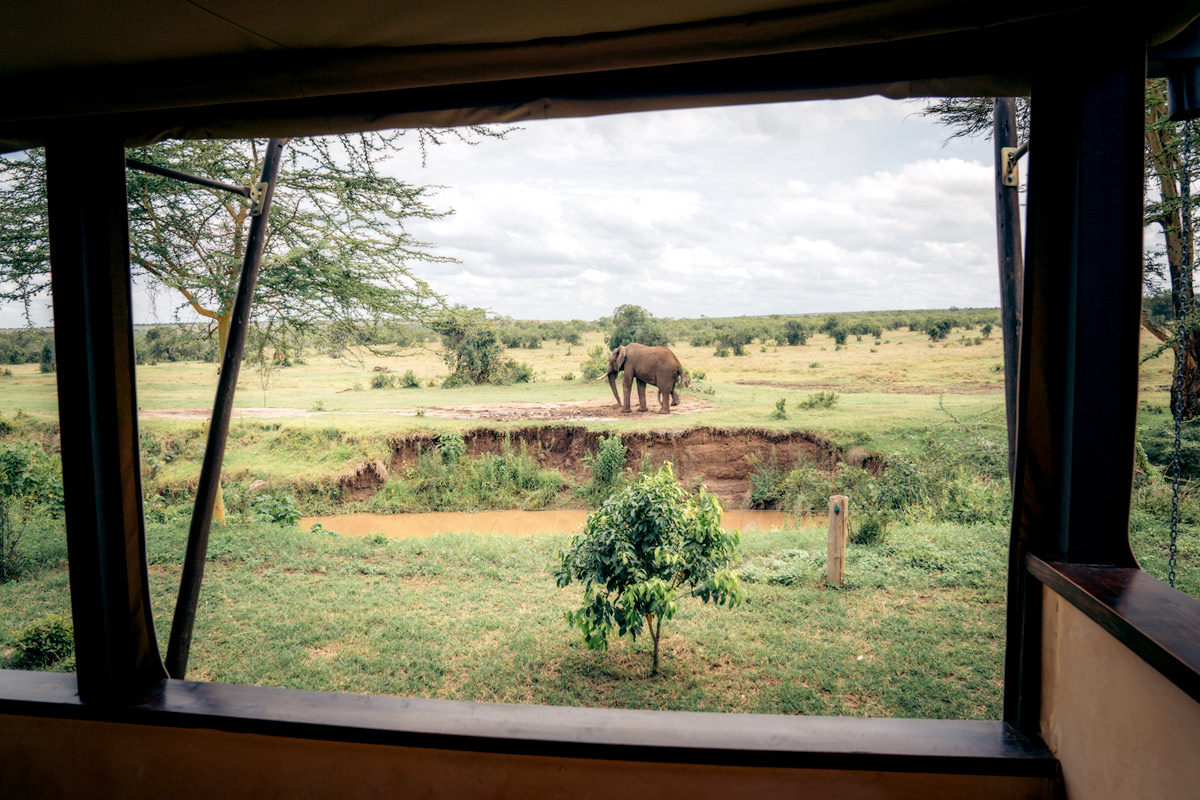
The food at Ol Pejeta Bush Camp was absolutely delicious! For a place that is fairly remote, we sure were treated to some really fresh and tasty meals. The staff checked with us every day what times we would like our meals to fit within our schedule. This was really nice as we were able to go out on our game drives whenever we wanted and not have to worry about missing out on food. We were even given the option of a packed picnic breakfast, which we took them up on multiple times. It was so beautiful eating breakfast out in the wild while watching over animals in the distance.
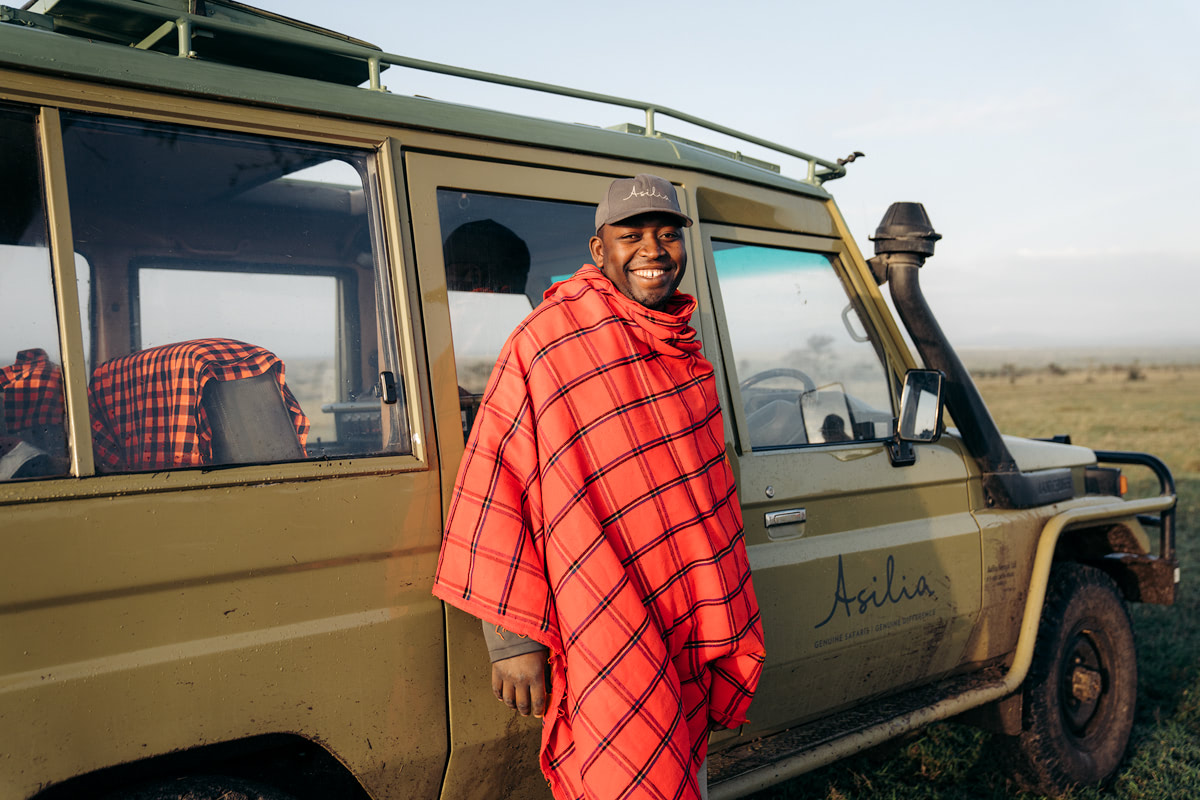
From the time we arrived until the moment we departed Ol Pejeta Bush Camp, we were treated to the most incredible customer service, ever! The staff were always so attentive and set on making our stay at Bush camp a memorable one. From the hot water bottles waiting in bed for us every night, to setting up romantic dinners in our tent, we cannot say enough good things about Asilia Africa and their exceptional hospitality. If you are thinking of making a trip to Kenya, Ol Pejeta Bush Camp is a must visit!
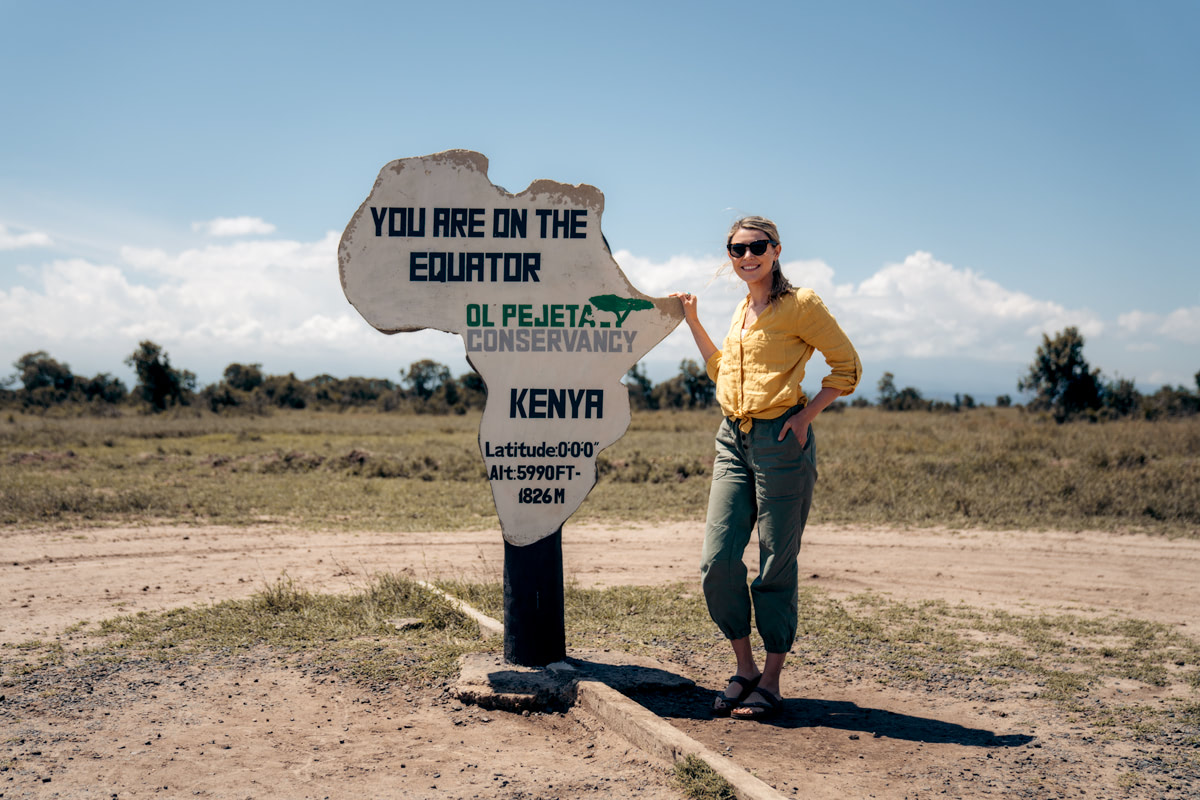
Standing in both hemispheres
Another really unique thing we got to do at Ol Pejeta Conservancy was visiting the equator! The southern and northern hemispheres meet in Ol Pejeta Conservancy, and the Equator is marked in the eastern sector of the Conservancy, near Rongai Gate.
Visitors can simply swing by during one of their game drives and see the equator sign for themselves. It was actually quite the novelty getting to stand in both hemispheres! I mean, having a foot on each side of the Earth is perhaps one of the best selfie opportunities you will ever get! Plus, on a clear day you will even have the majestic Mount Kenya as your backdrop.

WIN this same trip!
You could be off to Kenya for a life-changing safari at the world famous Ol Pejeta Conservancy! Home to astounding wildlife including the Big Five (the endangered black and white rhino, leopard, elephant, buffalo and lion), you’ll have the chance to see them all with wildlife expert Giles Clark by your side. And I mean EXPERT. Did you know you can tell a lion’s age by the color of his nose? Giles does. You’ll discover that and more while tracking lion, leopard and cheetah, and even visit the only remaining northern white rhino on the planet. Prepare for delicious meals, unreal sunsets, bush walks and the chance to get up close and personal with some of the most iconic animals on earth. Flights and lodging included!
PIN to read later!
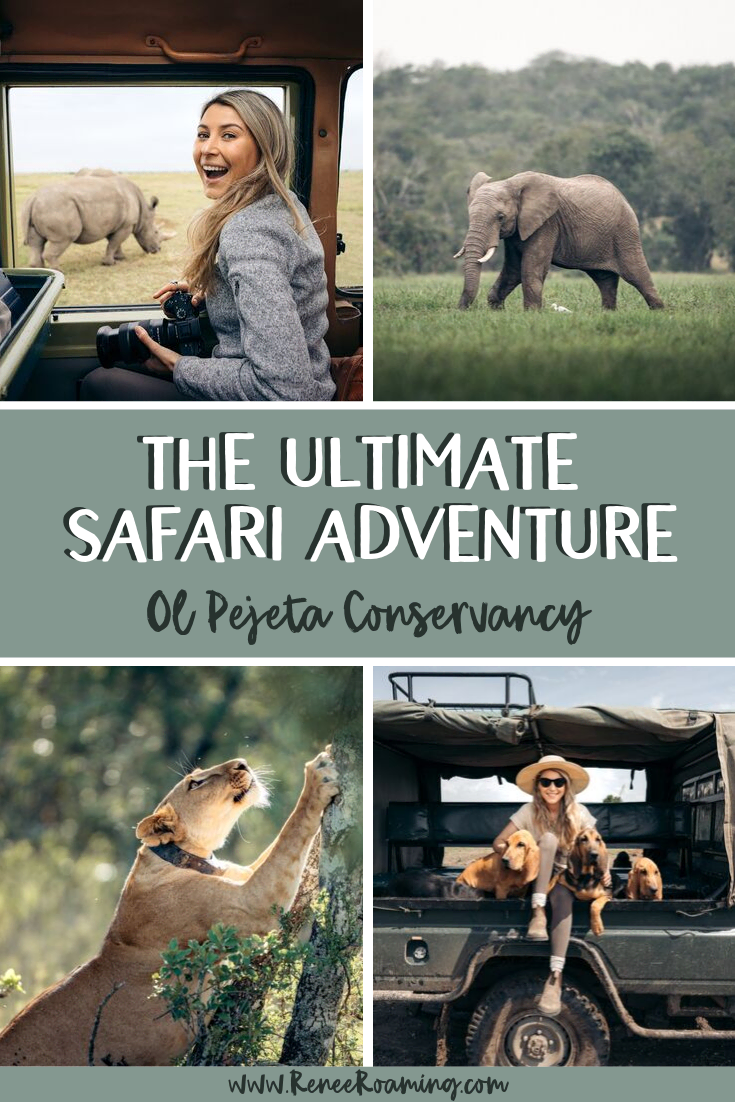
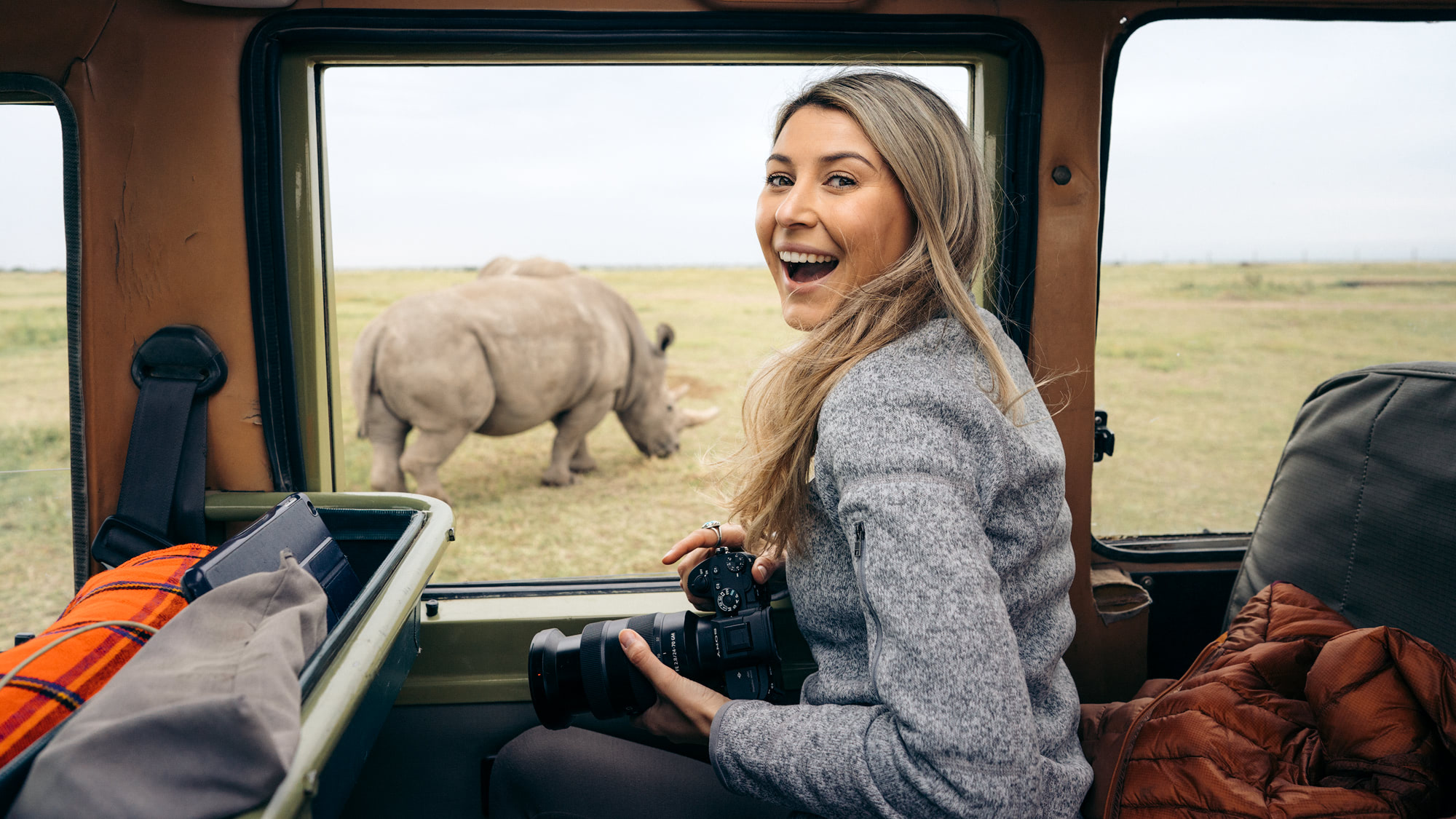
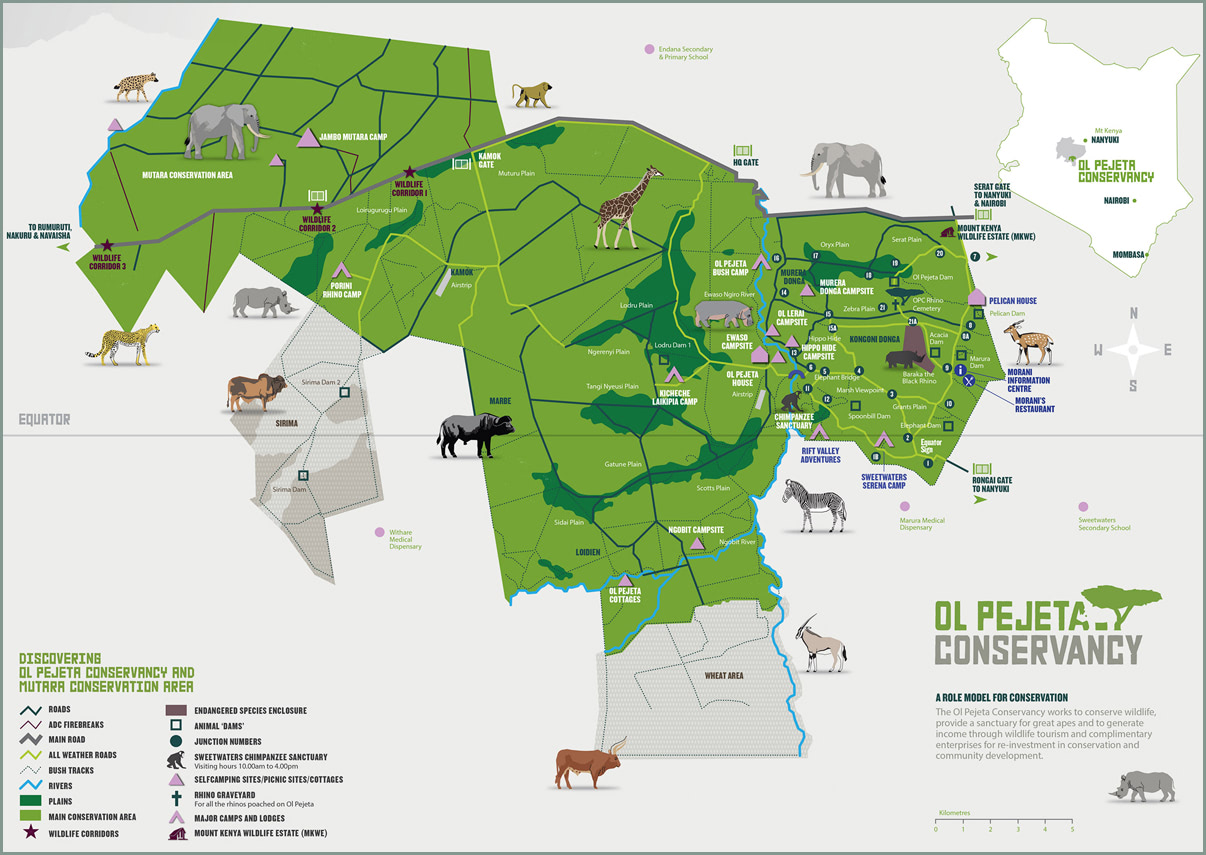
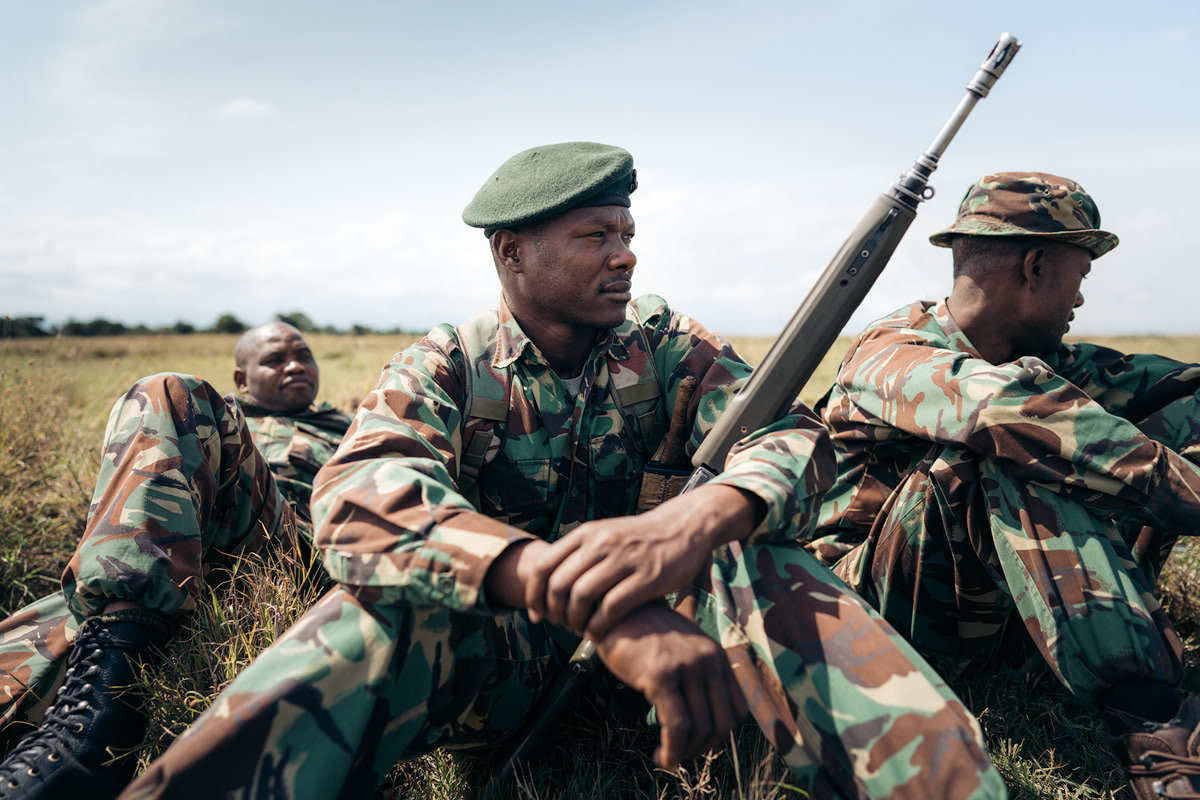
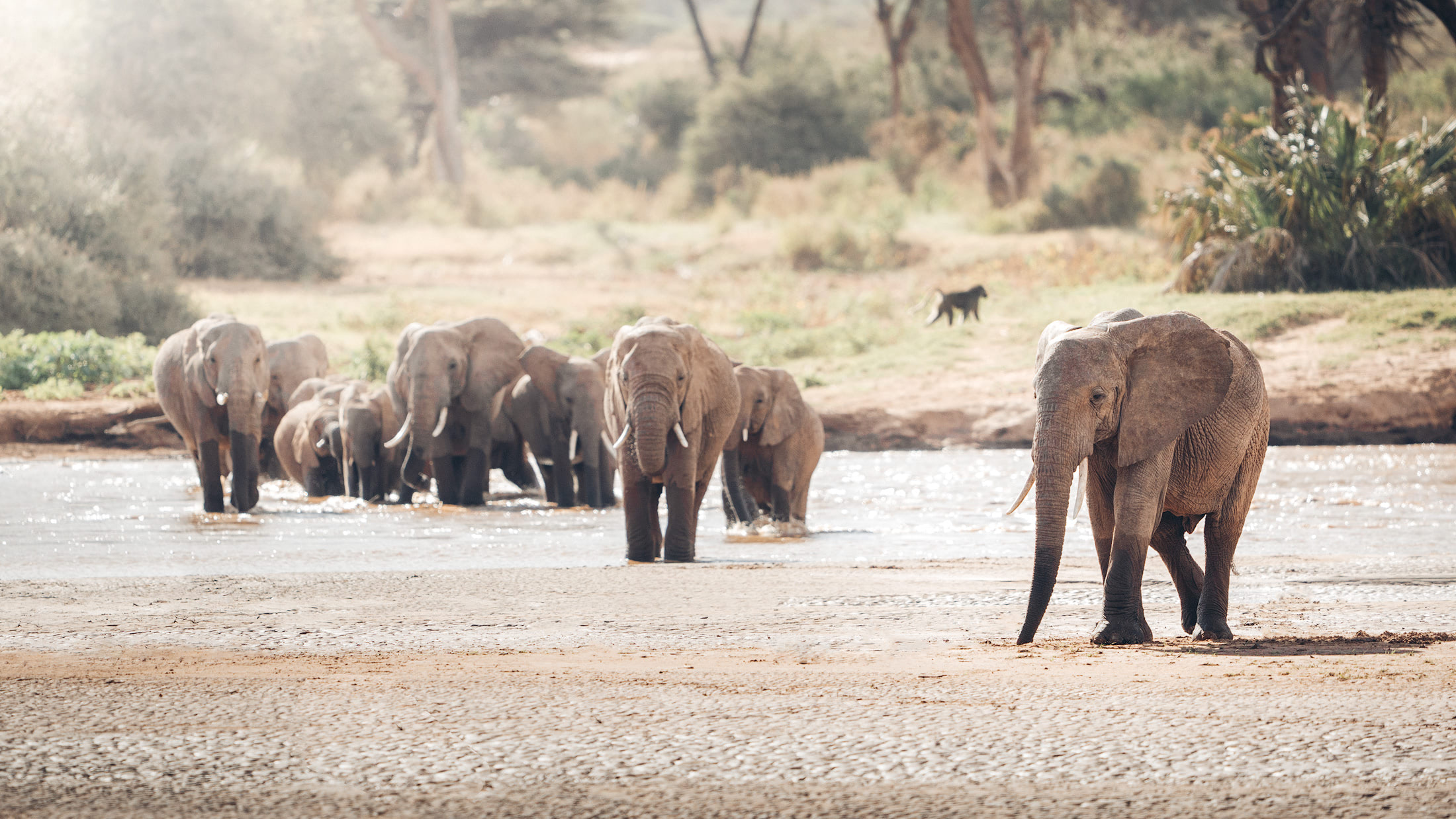
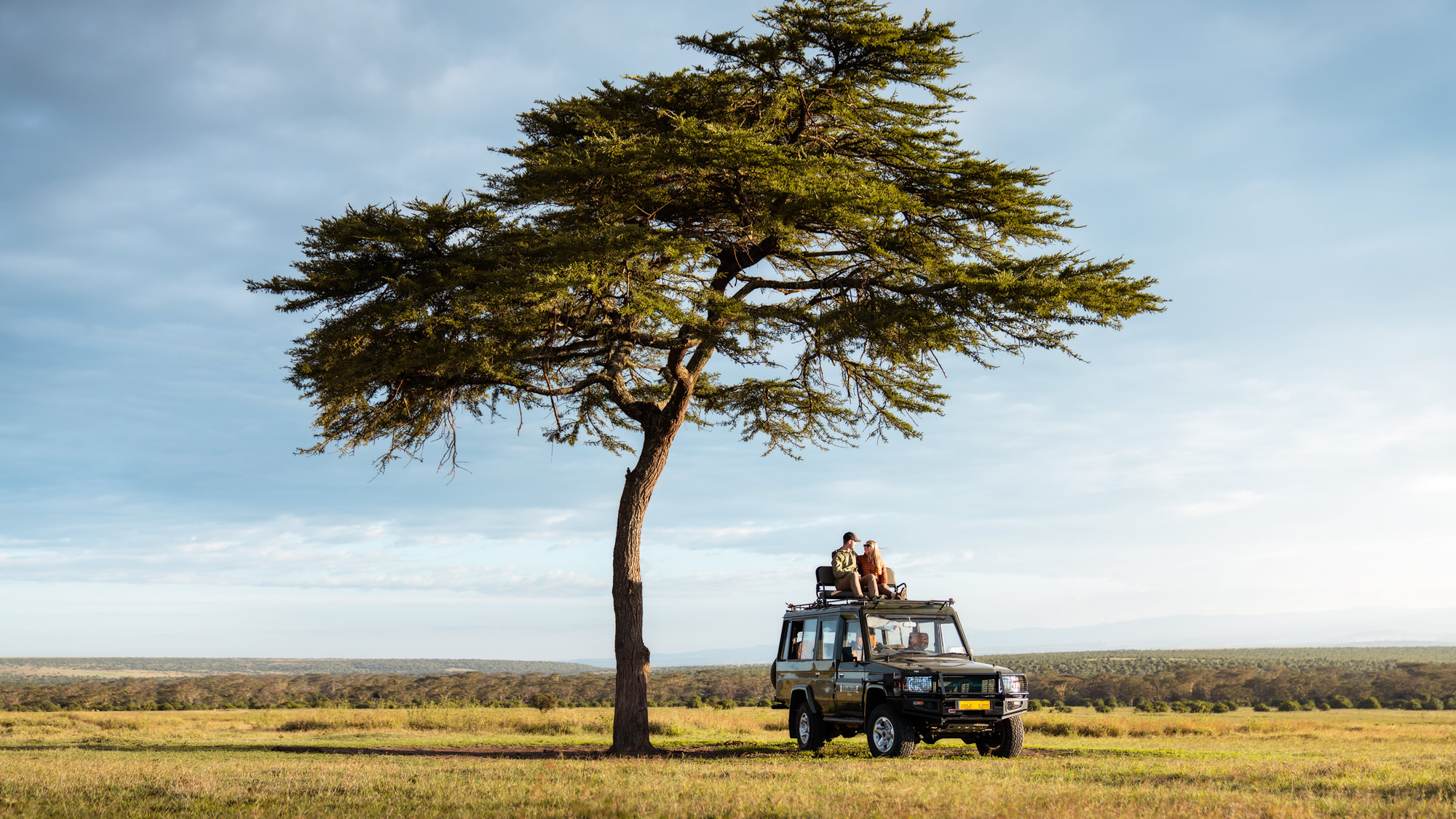
Here I had the chance to see many wild animals such as zebras, lions, and rhinos.
What an unforgettable adventure! Ol Pejeta sounds like a dream—wildlife, conservation, and stunning landscapes all in one. Definitely adding this to my bucket list!
I appreciate you sharing these lovely Kenyan experiences! Would you kindly compile a list of things to pack and wear for Safari using your resources? Considering a trip to Kenya but not really sure how to dress for a safari
This blog entry was fantastic, Renee. You have provided a wealth of wonderful information, and it is really kind of you to share the ways in which you have made money from your company.
Looks Nice
Thanks
Thank you for sharing these beautiful experiences in Kenya!! Could you please prepare a Safari what to wear/pack list in your resources? Planning a Kenya trip but a bit unsure on how to dress on safari…!!
What can I say, this is amazing. Stunning photos, great story and what incredible work they are doing at Ol Pejeta. Thankyou Renee for highlighting this worthy cause. I’m definately donating to help to going with all their great work.